For many women, finding the right post-operative compression garment is still a mystery.
By Caleb MacLean
Follow-up is everything after a hospital stay. For women returning home from surgery, childbirth or certain other medical procedures, part of that follow-up process involves an after-surgery garment of some kind. Typically, a doctor will mention a particular type of garment or possibly even a specific brand as patients are preparing to be discharged. However, most women have no concept of what to do next.
For instance, many women benefit from postpartum compression abdominal garments. In some cases, they are worn to help restore that pre-pregnancy figure. Jessica Alba (a former EDGE cover girl) famously wore a double corset 24/7 for 12 weeks after giving birth to her daughter and was back on the red carpet in no time. Other celebrities have fessed up about their use of compression garments in recent years, creating a mini-boom in the business. For mothers who have delivered via caesarian section, the support of a compression garment is less a choice than a must. It speeds recovery and healing of the abdominal muscles. Typically, an abdominal binder is worn for six to eight weeks after a c-section.

Prairie Wear
Post-operative compression garments often must be “staged.” For example, in a tumescent liposuction procedure, the surgical fluid used to loosen fat cells is not completely expelled. Patients begin with a “first stage” compression garment that helps with draining and also protects bruised and swollen areas. After a week or two, liposuction patients will switch to a less-confining “second stage” garment that allows the body to return to normal lymphatic functioning. After a month or more, when healing is complete, many patients opt for a “third stage” or everyday compression garment, which helps maintain the new body shape.
Trinitas patients often find their way to The Pink Room in Elizabeth, or its sister store in Union. The company is primarily known for its “shapewear”—waist cinchers, butt lifters, tummy-control garments and full-body shapers. In recent years, however, The Pink Room has become a go-to resource for after-surgery garments, with more than 20,000 items in stock and a sales staff meticulously trained by owner Maria Sparacio to ask the right questions and provide the right answers.
“Patients are referred to us by surgeons,” explains Sparacio, “but frequently they just tell them to go get a compression garment. For the women who come to us, it’s kind of a mystery. We spend 30 to 40 minutes on average consulting with new customers to find the garment that best matches their needs and is perfectly comfortable. We get it right 99 percent of the time—it’s very unusual when someone needs to come back.”
Wherever a woman goes for a compression garment, customization is crucial. There is no such thing as one-size-fits-all; the size and type of garment can vary dramatically depending on the type of surgery, the amount of swelling, the type of support needed, a patient’s sensitivity to compression and the length of time a garment is needed—from a couple of weeks to a couple of months or more.
As for Sparacio, she got into the business in a roundabout way. A native of Colombia, she was working her way through law school as a bank manager in the Pacific coast city of Cali when she came to the United States on a student visa. The plan was to improve her proficiency in English, but it didn’t take long for her to realize that she had a head for figures—the financial kind, as well as the humankind—and that these dual talents would serve her well as an entrepreneur.
“I noticed how many women wore clothing that was either the wrong size or the wrong style for their body types,” Sparacio recalls. “It was obvious to me that they were not getting the help they needed in stores. I watched how they did business and always thought that people wanted more help. I thought, ‘I can do this better. I can be more professional. I can help people.’”

Yoga Compression Garments
Sparacio opened The Pink Room, on Morris Avenue in Elizabeth in 2008, just as the economy was hurtling off a cliff. However, her knack for individualizing service and solving problems for a multitude of body types enabled the store to build up a loyal walk-in and online clientele. She was able to open a second store, in Union, a few years ago.
The quest for the ideal garment often takes consumers to a website rather than a store. It might be a matter of convenience, or a reluctance to allow others to see the physical aftermath of childbirth or surgery. Online shoppers should have the same goal as store visitors: finding a compression garment that closely mimics the wearer’s movements while staying flush to the skin. No creases, no bunching, no extra space. Most internet sellers have liberal return policies, and build that into their pricing. They also carry thousands of sizes. Many women start in a store and then order online from that store (or a competitor) going forward. Bargain shopping isn’t really an option, however. In the compression business, you generally get what you pay for.

www.istockphoto.com
Sports Compression: A Placebo?
Compression garments have been around for many decades, of course, and are perhaps more familiar to athletes than surgical patients. The last 20 years have seen a boom in performance-enhancing compression garments. In fact, many products originally designed for medical purposes, such as calf sleeves, have seen sales skyrocket among athletes. Whether compression garments actually increase performance is debatable; it could simply be a case of athletes believing they do. Most medical experts agree, however, that where they are most helpful is in the recovery phase of sports—for much the same reason they work post-surgery.
EDITOR’S NOTE: Not all post-surgery garments require a consultation or fitting. Maria Sparacio estimates that 60 percent of her customers buy online while 40 percent visit her stores.
“Chef Juan Placencia has branched out from his cozy Peruvian restaurant Costanera in Montclair to open this self-styled Pan Latin beauty.”
By Andy Clurfeld
Midway through the cachapa at Somos, I’m realizing it is the ultimate every-meal food. A corn pancake that’s more flavorful than those based on wheat, it’s not in need of a blast of sweet nor a slather of dairy to entice. It requires no wake-up call from a caffeinated beverage to wash it down nor a counterpoint of anything chilled to stimulate the taste buds. Its inherent sweetness is mitigated by starch, balanced by moisture and toyed with by a chef who understands its potential intuitively and by virtue of practice.

All photos courtesy of Somos
This cachapa, a homey number that spans all but the rim of a white dinner plate, is topped with a warming stew of leeks and mushrooms punctuated by pops of corn kernels and given a quick flourish of cilantro and cojita. The crowning glory? Tangy tomato jam, plopped not so much artfully as purposefully in the shape of rough quenelles atop the whole thing. The ensemble has a charming peasant-y quality to it, and its potential as breakfast, lunch or dinner makes me happy chef Juan Placencia has branched out from his cozy Peruvian restaurant Costanera in Montclair to open this self-styled Pan Latin beauty in North Arlington.
 Somos is large. You enter to a posh tavern of a space that shows how architect-designer Michael Groth likes playing with geometric shapes as much as Placencia likes stretching the parameters of traditional ingredients and classic dishes. Banquettes make little rooms out of a cluster of four round tables set for two. Semi-circular high-tops align to form the outline of another, larger circle. Chairs with short backs belly up to a bar softly lit from both the floor and the underside of the counter. There are arches as doorways and shelving and also as ornament and decor. You segue to a dining area that’s far less dramatic, set with light wood tables and chairs and lighting that’s not about creating a scene. That’s the purview of the food.
Somos is large. You enter to a posh tavern of a space that shows how architect-designer Michael Groth likes playing with geometric shapes as much as Placencia likes stretching the parameters of traditional ingredients and classic dishes. Banquettes make little rooms out of a cluster of four round tables set for two. Semi-circular high-tops align to form the outline of another, larger circle. Chairs with short backs belly up to a bar softly lit from both the floor and the underside of the counter. There are arches as doorways and shelving and also as ornament and decor. You segue to a dining area that’s far less dramatic, set with light wood tables and chairs and lighting that’s not about creating a scene. That’s the purview of the food.
 You can eat the cachapa all night, if you’d like, or you can pry chunks of black bass from slivers of red onion in a ceviche that’s brightened by a vivid soup of tomatillo flecked with nibs of avocado, snips of cilantro and the suspicion of chilies. Grab the tortilla crisps angled on top to scoop up the tomatillo broth—or ask your server for a sauce spoon. The ahi tuna ceviche is richer and more spirited, with its base of coconut milk plied with rocoto and lime. In this one, use the strips of fried plantain to sop up the sauce. I couldn’t ask you to leave behind the chicharron de pescado for the chicken-filled croquettas: The silky cod crusted in quinoa and topped by both a chop of tomato salsa and an aioli infused with sweet piquillo peppers is a terrific table partner for the pert fritters deftly fried and synched to the tune of aji amarillo chile peppers.
You can eat the cachapa all night, if you’d like, or you can pry chunks of black bass from slivers of red onion in a ceviche that’s brightened by a vivid soup of tomatillo flecked with nibs of avocado, snips of cilantro and the suspicion of chilies. Grab the tortilla crisps angled on top to scoop up the tomatillo broth—or ask your server for a sauce spoon. The ahi tuna ceviche is richer and more spirited, with its base of coconut milk plied with rocoto and lime. In this one, use the strips of fried plantain to sop up the sauce. I couldn’t ask you to leave behind the chicharron de pescado for the chicken-filled croquettas: The silky cod crusted in quinoa and topped by both a chop of tomato salsa and an aioli infused with sweet piquillo peppers is a terrific table partner for the pert fritters deftly fried and synched to the tune of aji amarillo chile peppers.
Though little at Somos weighs in as heavy in the startertapas round, working a couple of salads into your meal is all-around wise. I think Placencia’s warm quinoa salad ranks as the standard by which all other main-dish tosses should be judged: It’s served slightly warm and the elements that mingle with the tiny seeds—kabocha, Bartlett pear, Brussels sprouts, chorizo, tomatillo— are either chopped or crumbled so as not to overwhelm the focus of the salad. The signature Somos salad starts with large leaves of Bibb lettuce and tops them with a haystack of spiralized carrots and onions, as well as avocado and, yup, more quinoa. The best part of this one? A vigorous sofrito vinaigrette that lifts familiar ingredients.
 If you wish, you can stop here, with a full slate of small plates that will evolve and change with the seasons and the desires of Placencia and his chef de cuisine Roberto Carnero. The main courses are scaled back in quantity and also achievement. Peruvian pot roast is shredded and served with wide noodles in a spare sauce of tomato, carrot and even green peas. Chicken is roasted with achiote, plopped on mashed potatoes and a messy splay of limp jicama slaw dressed in something that gave it a garish magenta glow. Branzino, grilled with little seasoning, was a snooze alongside yuca fries with far less personality than mainstream French fries, plain white rice and a metal ramekin of bland pico de gallo. The patatas bravas, which we paid for as an extra side, needed more of the good romesco aioli. But they had flavor.
If you wish, you can stop here, with a full slate of small plates that will evolve and change with the seasons and the desires of Placencia and his chef de cuisine Roberto Carnero. The main courses are scaled back in quantity and also achievement. Peruvian pot roast is shredded and served with wide noodles in a spare sauce of tomato, carrot and even green peas. Chicken is roasted with achiote, plopped on mashed potatoes and a messy splay of limp jicama slaw dressed in something that gave it a garish magenta glow. Branzino, grilled with little seasoning, was a snooze alongside yuca fries with far less personality than mainstream French fries, plain white rice and a metal ramekin of bland pico de gallo. The patatas bravas, which we paid for as an extra side, needed more of the good romesco aioli. But they had flavor.
 Don’t expect the pineapple tres leches to look like any tres leches you know: Here, it’s served as a layered parfait in a clear, tall glass, with a zippy coconut-rum sauce and chunks of passionfruit laced within—and a toasted mashmallow-y substance on top. My dining companions really liked it, as well as the squash doughnuts drizzled with a cinnamon-streaked fig relish. Me? I could’ve returned to bliss with the cachapa.
Don’t expect the pineapple tres leches to look like any tres leches you know: Here, it’s served as a layered parfait in a clear, tall glass, with a zippy coconut-rum sauce and chunks of passionfruit laced within—and a toasted mashmallow-y substance on top. My dining companions really liked it, as well as the squash doughnuts drizzled with a cinnamon-streaked fig relish. Me? I could’ve returned to bliss with the cachapa.
For when you find that one-in-a-million dish that does it all, you stick with it
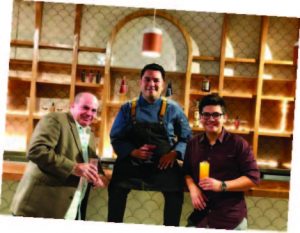 Behind the Scenes at Somos
Behind the Scenes at Somos
Juan Placencia is a bona fide star chef in New Jersey. Born in Lima, Peru, he came to the United States as a toddler and got his first whiffs of the restaurant life at the places his parents owned and operated. If you know Oh! Calamares, now in Kearny, you know where Placencia got his start. He went to culinary school and then, in the early aughts, worked at top restaurants in Manhattan, including Gramercy Tavern and Eleven Madison Park. Before opening his own restaurant, he did turns at Gotham Bar & Grill and Del Posto, to learn more about the operational side of things. In 2010, he opened the BYOB Costanera in Montclair. Somos opened in the late fall of 2018. The chef’s team includes chef de cuisine Roberto Carnero; the architect-designer Michael Groth; general manager Brian Bode; and beverage consultant Rachael Robbins. They are the “we are” at Somos—which translates as just that.
SOMOS
185 River Road, North Arlington
Phone: (201) 621.0299 • somosnj.com
Open weekdays, except Tuesdays, for dinner; open Saturday and Sunday for lunch and dinner. Major credit cards and reservations accepted. Prices: Tapas and starters: $7 to $14. Main dishes: $17 to $27. Sides: $4 to $5. Desserts: $8 to $9. There’s a cocktail list ($11); glasses ($8) and pitchers ($26) of sangria; wines by the glass and bottle; and beers on draft and by the bottle.
The ups, downs, ins and outs of raising a child who is probably smarter than you are.
By Jim Sawyer
Over the past few decades, the validity of IQ scores has taken a beating. For all that number does say, there is an awful lot it doesn’t. For better or worse, however, we are a score-keeping society, thus we continue to honor high IQs. For the record, a young person with an IQ of 125 or above is considered to be “gifted.” This is no guarantee of success in life, but it is strongly indicative of a complex, fertile intellect.
If you happen to be the mother or father of such a child—or suspect that your child is gifted—you know that parenting is anything but easy. Nor, in many cases, is recognizing your child’s “giftedness” in the first place.
Indeed, high-intellect kids don’t all act or think or look the same. They do not always stand out from their peers in obvious ways; often when they do, it is for behavior that is negative rather than positive. The National Association for Gifted Children—a Washington DC-based organization dedicated to supporting families and teachers of gifted and talented kids—points out that 60 percent of gifted five-year-olds already know nearly all of the material taught in kindergarten the day they walk into the classroom. A bored five-year-old can easily become disruptive.
What qualifies a child as gifted? He or she is able to reason and learn at a high level from an early age, demonstrating proficiency in math or music or language. You’ve probably encountered a three-year-old with a broad vocabulary who speaks in long, complete sentences (with grammar that’s as good or better than yours). This is a major tip-off. Sometimes, however, giftedness in a young child is more noticeable in the physical realm, such as artistic talent or athletics. Either way, gifted children almost always learn faster than their peers and perform better in testing and on exams. Because they deal with a larger and ever-changing “sample size” of students, educators—particularly classroom teachers—are often the first to notice a gifted child. It’s not always news to the parents, however it is gratifying to have their suspicions confirmed.
What happens from that point—how development is encouraged and accelerated through childhood, adolescence and young adulthood, and how certain obstacles are eliminated along the way—will determine how a kid’s gifts manifest themselves in later life. So, hey. No pressure, right?
School is tremendously important. Or, perhaps more to the point, education is tremendously important. Finding a school with a “gifted” program is a start. But not all programs are created equal. Ideally, gifted children will be exposed to a wide range of educational experiences (both in and out of school) at a young age and, then, as they grow older, more of a focus on the areas in which they show the most promise. A good gifted program will be nimble enough to keep adjusting to a child’s capabilities, while also pointing parents to outside resources and programs that will keep nourishing his or her intellect. Parents need to stay on top of their gifted child’s progress, taking advantage of whatever assessments are offered and being open to suggestions and even criticism. Indeed, parent education is a huge part of the process.

www.istockphoto.com
What if your son or daughter has not been identified as gifted, but you are convinced he or she is? Actually, this is not all that unusual. Not every elementary school (and not every elementary school teacher) is equipped to spot giftedness. In many cases, this type of evaluation won’t even be made until your child is six or seven, particularly in a public school environment. If you suspect your three-year-old is miles ahead of the competition, go get him or her independently tested. The sooner you can evaluate needs and opportunities, the better off your child will be.
That is doubly true for children who exhibit early social or behavioral problems, or who are hyper-focused on a single area of interest (e.g. being able to name 100 dinosaurs). While these can be signs of giftedness, they may also be early indications of ADHD or Asperger’s. IQ testing is one way to avoid a misdiagnosis. A gifted child who underperforms in the classroom may not be connecting with the teacher, or be bored or disorganized. But he or she may have an attention deficit issue, too. Both can be true. Testing will usually solve the mystery, but it is up to the parents to push for that; the school may see a lackluster student and never think to do any screening.

www.istockphoto.com
What Now?
Once your gifted child has been identified and you’ve found programs and resources that will feed his or her intellect, the rest is easy, Mom and Dad. No…just kidding. Your work as a parent actually has just begun!
Consider, for instance, the fact that gifted children sometimes act their age. Their minds may be careening into adulthood, but their bodies and emotions are always playing catch-up. It is not unusual for incredibly able and mature kids to melt into disabling temper tantrums over the tiniest things. They are under constant pressure of one kind or another, and often suffer from severe anxiety—without being able to articulate their frustration. This is only exacerbated by bouts of disorganization and by a feeling of isolation from their peers. A high-functioning mind is rarely a peaceful one. Constant love, support, understanding and recognition are a must. A little courage doesn’t hurt, either.
Ironically, the best bits of advice for parents of gifted children may be the most counter-intuitive. Parents who push or overschedule their gifted child, or who defer to them on big decisions, are likely to do more harm than good. On three specific points—all don’ts—there is strong consensus among educational and developmental health experts:
- Don’t push for perfection. Good grades and scores are not a measure of success for a gifted child. Encourage your gifted child to develop and pursue multiple interests at whatever pace makes sense to them. Voracious learners will learn voraciously without parent reminders.
- Don’t confuse challenging your gifted child’s mind with keeping the child constantly busy. Maintain a reasonable schedule with lots of downtime. When a gifted child is “doing nothing,” the kid’s brain is still percolating.
- Don’t let your gifted child call the shots. You are the grown-up. You make the important decisions.
Go ahead and add to “that Don’t make your gifted child an example for your other kids.” Rather than elevating the performance of siblings, this is more likely to lower the performance of the gifted child, who might choose to “dumb down” in order to fit in with brothers and sisters.
Friendly Advice
Finally, parents of high-intellect kids should understand that their child may need help or encouragement forming social connections. This is really important. Popular culture tells us gifted kids are nerds or geeks who naturally isolate themselves from others. This is untrue. Gifted children play sports and perform on stage and get into all kinds of mischief. They want to fit in with schoolmates as much or more as they do with their siblings.
Ask a gifted child what he or she wants most in the world and the answer is likely to be “a friend.”
Often, a gifted child will seek friendship from an older child who is at a similar stage of emotional maturity. Interestingly, this is often misinterpreted as a lack of maturity, which is 180º wrong. A study by the Davidson Institute for Talent Development concluded that intellectually gifted children start looking for friendships based on closeness and trust at an age when their classmates are still looking for play partners. Naturally, they gravitate toward older kids. This gap narrows by the end of elementary school, but the intervening years can be isolating. The study’s author, Miraca Gross, suggests that parents actually discuss the hierarchy of friendship conceptions with their gifted children:
“Because gifted children begin to make social comparisons earlier than their age-peers, they can become acutely aware that they seem to be looking for different things in friendship than are their age-peers. A frank but sensitive discussion of this can help ameliorate the feelings of ‘strangeness’.”
Gross adds that high-intellect children tend to prefer one or two close friends to being part of a larger friend group:
“It’s okay if your gifted child prefers to link with one ‘special’ friend rather than ‘play the field.’ Parents sometimes worry that the child seems to be putting all his or her friendship eggs in the one basket—but we must remember that because the quality of gifted children’s friendships is different, they have an earlier need for the exchange of confidences and the discovery of mutual bonds. This is more easily achieved in pairs than in larger groups.”

www.istockphoto.com
If you are the parent of a gifted child, good research and advice is available on a wide range of topics, both online and on bookstore shelves. Several organizations have dedicated themselves to maximizing the brainpower and mental health of high-intellect kids, and most elementary schools do employ someone who can spot a superior student who has somehow slipped under the radar through nursery school and kindergarten. If you suspect your child is gifted, these same resources can point you toward the kind of testing and expertise that will let you know for sure.

www.istockphoto.com
Summer Solutions
According to the National Association for Gifted Children, even the brightest kids can backslide academically during an unstructured summer. The solution for many is an overnight camp experience. Parents of gifted children face some challenges finding the right fit, however. The boxes you’ll want to check (and, frankly, this goes for parents of every child) include:
- Good balance between academic, physical and social activities
- Active, hands-on learning vs. passive learning
- Exploring areas beyond what a child is learning in school
- Progress assessments at the end of a session
- Staff trained to address intellectual and emotional needs
According to Dr. Denise Drain, who consults on gifted programming strategies, professional development and program review, a good summer program should build on children’s interests and expertise.
“They may give children and adolescents an opportunity to develop expertise in areas such as sports, visual and performing arts, music, and academics,” she maintains, adding that being engaged in their own learning “increases motivation and helps children to develop goals and positive attitudes toward their abilities.”
There are a number of exceptional residential summer camps within a day’s drive of New Jersey, which make use of high-end college facilities. If you are in the market, these might be good starting points:
Summer Institute for the Gifted • Bryn Mawr, PA
Residential students live in dorm groups of a dozen or so, with four-period academic days and special trips and programs on the weekends. Classes are comprised of students in the same age- and talent-range.
The Center for Talented Youth • Baltimore, MD
This organization has a summer camp program for gifted children at Johns Hopkins. The three-week sleep-away programs begin in 5th grade and offer courses in the humanities, sciences, math, writing, and computer science.
Duke University Summer Camp • Durham, NC
Duke’s youth summer programs encompass math, science and engineering, but also offers creative writing and performing arts for gifted campers. The programs run for about two weeks, again starting at 5th grade.
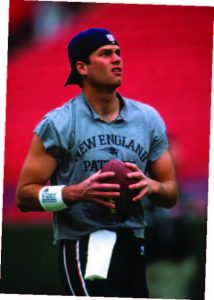
Black Book Partners
Clearing the Bar
Which public figures just cleared the 125 IQ gifted threshold? Vladimir Putin tested at 127, while President Lyndon Johnson was a tick lower at 126. Also at 126 are NFL quarterbacks Tom Brady (right) and Steve Young. Right at 125 are guitar virtuoso Eddie Van Halen, along with actors Chris Pratt, Tom Cruise and Mira Sorvino. Who fell just short of gifted status? Among public figures who tested at 124 were President George W. Bush, X-Men actress Famke Janssen and serial killer Ted Bundy.
Easing the Stigma of Mental Illness and Addiction
By Yolanda Navarra Fleming
 If anyone can speak with authentic candor to a ballroom full of people about behavioral health and addiction, and make them simultaneously laugh out loud and nod in empathy, it’s Patrick J. Kennedy II, the former U.S. Congressman, mental health advocate and author of the New York Times Bestselling book titled A Common Struggle: A Personal Journey Through the Past and Future of Mental Illness and Addiction (Blue Rider Press, New York, 2016).
If anyone can speak with authentic candor to a ballroom full of people about behavioral health and addiction, and make them simultaneously laugh out loud and nod in empathy, it’s Patrick J. Kennedy II, the former U.S. Congressman, mental health advocate and author of the New York Times Bestselling book titled A Common Struggle: A Personal Journey Through the Past and Future of Mental Illness and Addiction (Blue Rider Press, New York, 2016).
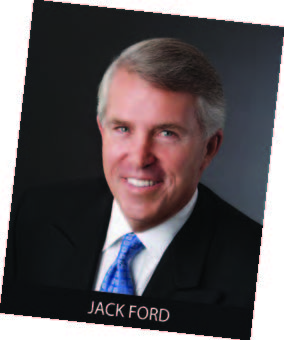 In October 2018, the Trinitas Health Foundation launched their Peace of Mind Campaign with an informative evening with Journalist Jack Ford moderating a conversation with Kennedy on “Easing the Stigma about Behavioral Health” at The Park Savoy Estate, Florham Park.
In October 2018, the Trinitas Health Foundation launched their Peace of Mind Campaign with an informative evening with Journalist Jack Ford moderating a conversation with Kennedy on “Easing the Stigma about Behavioral Health” at The Park Savoy Estate, Florham Park.
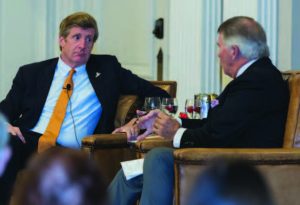 The event raised $235,000 toward the $4 million renovation project to update Trinitas’ Behavioral Health facility, one of the most comprehensive departments of behavioral health and psychiatry in New Jersey. They offer specialized services for adults, children and their families, as well as services for those with various addictions, and a 98-bed inpatient facility. The hospital welcomes nearly 200,000 behavioral health visits per year. The multi-disciplinary and bi-lingual staff includes psychiatrists, psychologists, social workers, nurses, creative arts therapists, substance abuse counselors and mental health workers, offering such services as psychiatric, emergency response/screening center, inpatient, outpatient, partial hospital programs and addiction services.
The event raised $235,000 toward the $4 million renovation project to update Trinitas’ Behavioral Health facility, one of the most comprehensive departments of behavioral health and psychiatry in New Jersey. They offer specialized services for adults, children and their families, as well as services for those with various addictions, and a 98-bed inpatient facility. The hospital welcomes nearly 200,000 behavioral health visits per year. The multi-disciplinary and bi-lingual staff includes psychiatrists, psychologists, social workers, nurses, creative arts therapists, substance abuse counselors and mental health workers, offering such services as psychiatric, emergency response/screening center, inpatient, outpatient, partial hospital programs and addiction services.
Trinitas provides treatment for patients like Kennedy, who was diagnosed with asthma as a child, and went on to suffer through a lifetime of depression, bipolar disorder and substance use, which included many failed attempts at sobriety until he arrived at the right balance of medication and alternative therapies.
Patrick Kennedy, son of the late Senator Edward “Ted” Kennedy and Joan Kennedy, has fully embraced his DNA. He has worked tirelessly to shed new light on the struggle with mental illness and addiction that hang—now in plain view—on numerous branches of his family tree. In true Kennedy fashion, he is in the public eye working to right certain wrongs, more specifically, to get the world on board with the fact that the brain is part of the body and requires (and deserves) proper medical attention just like any other part. But unlike the Kennedys before him, he practices a sort of transparency that he recognizes as his destiny, which he fully owns both in spite of his DNA and because of it. In his book, he admits to the mistakes he has been hardwired to make and since then, has made easing the stigma of behavioral health his sole mission.
His passion was contagious when he and journalist Jack Ford discussed Patrick’s position as the nation’s leading political voice on mental illness, addiction, and other brain diseases. Ford’s focus on the subject stems from the fact that his father died from alcoholism at age 49.
Kennedy’s efforts to create stronger advocacy for all types of mental health and substance use disorders, have manifested in, among other things, lead sponsorship of the Mental Health Parity and Addictions Equity Act of 2008, as well as the creation of two nonprofit organizations—The Kennedy Forum and One Mind, which aim to provide and encourage groups that would normally compete for research dollars and support in other forms, to join forces.
The Kennedy Forum leads a national dialogue on transforming mental health and addiction care delivery by uniting mental health advocates, business leaders, and government agencies around a common set of principles. One Mind pushes for greater global investment in brain research, which Kennedy has called “the next great frontier in medicine,” and is pioneering a worldwide approach to make scientific research, results, and data available to researchers everywhere.
Progress has been made, but Kennedy says there is much more that can be done to encourage acceptance that brain illnesses should be treated with the same level of concern and respect as other diseases of the body such diabetes, cancer, heart disease, etc.
Here is a large portion of their conversation.
Jack Ford: You have clearly become one of the champions in the area of mental health and addiction. …You have been very open and candid in your book talking about your own life and your own struggles. There has always been a spotlight on the Kennedy family, and it’s something you cannot run and hide from. But what made you decide to step into that spotlight to talk about this in your own personal journey?
Patrick Kennedy: …I didn’t ask to be here as the advocate for mental health and addiction. I never wanted to be here at a podium being asked about this part of my life… and living in a family that also suffered from mental health and addiction. You got me by default. I became the leader of mental health and addiction policy in this country because I put my name on a bill that said the brain was part of the body. I never expected to be the first name on the bill. I thought because in my father’s case it took him 50 years in the US Senate before he got sponsored whatever he wanted because he was in the Senate longer than almost anyone else and he was chair of the big committees. So it was odd that as the youngest member of Congress, at 27, from the smallest state in the country and in the minority party, and as the lowest guy on the totem pole I got the chance to put my name number one. I got to be the sponsor. How in the world does that happen? Because no one else wanted to have to go in front of the cameras and have Jack ask them the same question he just asked me. That is the honest-to-God truth. No politician wanted to get up there and say they’re a champion of mental health, knowing that all of us are affected by it, and then have a press person ask about our own family situations. Because if we said anything, well, that yarn just spools right out and where do you reign it back in? And so you’re in trouble. If you say you’ve never been to treatment yourself, then you’re a one-termer. You say it’s happened to anyone in your family and you’re in the dog house with them, and you might be affecting their mental health by outing them involuntarily. So, there is no good minefield to walk through on this. And if you say no, they’ll think you’re a liar. So that’s why no one else wanted to put their name first.
I put my name first, not because…I keep reminding my Republican colleague Jim Ramstad, who I co-sponsored this with, he goes…if your uncle were alive he’d put you in a chapter in his book Profiles in Courage, but I have to tell everyone…the only reason I came out was because the guy I was in drug treatment with sold his story about being in drug treatment with me to the National Inquirer, which meant my face was on the cover (with the headline), “Patrick Kennedy: Cocaine Addict.” When I got up one morning, I was a second-term member of the State Legislature, and that was on every check-out counter in my district. I thought I was all done, as you would expect. I represented a very conservative neighborhood in Providence, RI, in the State House. The good thing is that my neighborhood was predominately Italian-American. Even though no one liked a drug addict, they really didn’t like someone who ratted on a drug addict. My posse…we started a re-election bid on “We’re not for the Rat Bastards; we’re for Patrick Kennedy.” That was my campaign slogan.
JF: That sounds like a skit from Saturday Night Live.
PK: Life is often like that.
JF: You’re right. So you became the lead sponsor with a bi-partisan backing, signed into law in 2008 by President George W. Bush. The title of the act is the Mental Health Parity and Addiction Equity Act. Why did you feel there was a need for the Federal Government to pass this act and what were you hoping it would provide?

Jill Sawers, Campaign Co-Chair & Trinitas Health Foundation Trustee Chair
PK: I was incredibly blessed because everything I was exposed to in life kind of set me up for this. If I look back on my life now, I could never have orchestrated the way it turned out, in a better way for me. My Aunt Eunice started Special Olympics with my grandmother. My family was steeped especially in the Disability Rights Movement, my father worked on the Americans with Disabilities Act. I was very sensitized to people who were treated as “the other,” particularly if they had a brain illness of some kind. My Aunt Rosemary, frankly, had a lobotomy because of her psychiatric disorder. Most people don’t know that. She had a mild form of intellectual disability. And yet, like many people, a certain percentage of those with intellectual disability also have psychiatric disorders. Everything I’ve read and learned about my Aunt Rosemary, leads me to conclude she had a psychiatric disorder, which really unnerved my grandfather, as it would any parent. At that time, lobotomy was the standard form of therapy. When that didn’t go well, she was banished from my family, and was sent to Wisconsin and wasn’t seen again by any member of my family, until after my grandfather had a stroke. My grandfather never saw her again after the lobotomy. That shame was so deep in my family that it transmitted itself through my father’s generation. When I think about my father’s inability to address what’s right in front of him, …he had learned and become very good at denial. It allowed him to survive things that…no one could survive what my father survived.

Deborah Q. Belfatto, Campaign Co-Chair & Trinitas Health Foundation Trustee
I was sensitized to that and to growing up with my mother being vilified because of her alcoholism. She would walk through the house inebriated in the middle of the day. My dad would have all of our nation’s leaders come to our house, people you would recognize and know of, and none of them would look up when my mother walked through the hallway. As a kid, I totally got the message to get her back in the room and shut the door. My brother, sister and I spent our childhoods doing all we could to hide our mother so she wouldn’t embarrass anybody. That was on family vacations, in our house and everywhere we went. I never got to connect with my mother on an emotional level because she was so debilitated by her illnesses, both alcoholism and severe depression, but I felt the need to defend her. Throughout my life, that’s what I took on.
I really feel blessed that I was able to support this bill and that, ironically, the House version of the bill covered alcoholism and depression and the Senate version of the bill did not. I could not get any agreement between the House and the Senate versions. But when my dad got brain cancer and he was home and nearing the end of his life, I asked him to help get the House version passed. He told me to call Chris Dodd, his best friend. …four days later, the market collapsed and the banks in this country went belly-up, and all of a sudden, Chris Dodd became somebody. He was Chairman of the Banking Committee and all of a sudden he was the most important man in Washington, D.C. That was four days after I asked for his help to get HR1424, the Mental Health Parity and Addiction Equity Act passed.
He called me back and said, “Patrick, we have to pass this bail-out of our nation’s banks. It’s going to cost the taxpayers between $700 and 800 billion dollars. None of us wants to vote for it, but we know if we don’t, our country could end up in another Great Depression. That was the feeling on Wall Street and around the country at that time. He said, “I have an idea.” I said, “What’s that?” He said, “How about I write the whole Toxic Acid relief program into your bill, the Mental Health Parity and Addiction Equity Act.” And I said, “You can do that?” And he said, “Yes, I’m Chairman of the Banking committee.” And that’s exactly what he did. And because of that, we got the whole DSM (Diagnostic Statistical Manual for all mental illnesses) covered in the Parity law, which we never would have gotten if it was on its own. Just to give you a quick flash of what a Conference Committee is, it’s when the Senate sponsors meet with the House sponsors. Pete Domenici said to me, “I’ll be damned if I let those addicts sink our bill.” And frankly, he was right. If we had added addiction, there was no way the Congress of the U.S. would have passed that. There would be no way we could pass that bill today for the same reasons.
There is no advocacy out there in this country. None! Facing addiction… You could fill this whole house with the members nationwide. Faces and Voices probably would fit in the room back here. NAMI (National Alliance on Mental Illness) does a great job, but they’re a fraction of what they really represent in terms of the populations affected by these illnesses. Bottom line, the reason we don’t get anywhere on these illnesses, is the stigma is so great that no one is willing to come up like HIV-AIDS, who knows. If they could do it, we should be able to do it. But frankly, I think the stigma is even greater than even cancer. That’s the big problem.
JF: Why do you think that is? I had a conversation with someone recently on my PBS show about this. They said something to me, and I hadn’t thought of this. So much of it has to do with words. For instance, if you’re talking about someone who has “substance abuse,” what does that say as opposed to “substance disorder?” I thought about it. I realized, and I make my living with words, the words you use can be extraordinarily impactful. What do you think it is that drives this notion of the stigma that attaches to mental illness and addiction?
PK: …It cuts to the heart of it, and that is who we are as people. We’re talking about our agency, our ability to be considered of right mind. Who amongst us wants to be saddled with the label that somehow we’re not “all there,” that we’re not in full possession of our mental faculties. That, my friends, is why there’s stigma because there’s no one out there who wants to be seen in a way that’s pitiful. …There is nobody who can get past the fact that if you admit that you have one of these illnesses people are going to not only look at you different, but you’re going to have an immediate liability in dealing with them and other people for the rest of your life. They’re always going to look at you in that prism. Are they all right today? Are they on their meds? People make judgments. It’s very disconcerting.
JF: How can we combat that? Like you said, it gets to the core of who we are in the notion of your defense mechanisms and how you want to view yourself. As an aside, I interviewed an Iraq War veteran who lost both legs and part of an arm and suffered a head injury. The first day after his surgery, he was ready to get up and start his rehab, but he wouldn’t talk about his brain injury. When I asked him, he echoed what you said. He said, I can lose my arms and I can lose my legs and I can still function and remember that I was a soldier. But I can’t look my comrades in the eye if they think there’s something missing. So how do we deal with that?

Susan Head, Campaign Co-Chair & Trinitas Health Foundation Trustee
PK: …We have to deal with each other based upon a sense of compassion and not judgment, in that respect. The way we’re all conditioned is to give people value based on all of these other characteristics besides who they are as human beings, and what matters most is how you connect with someone. Mental illness and addiction do not need to impair the human connection, even while it can impair the way communication takes place because of the impairments from these illnesses. But people can show human warmth and love, and that has to be the essential element. I’m a real believer these days in seeing the spark of divinity in every person because every person has his own set of gifts. It may be more difficult to see to find those gifts in some people than in others, but if you spend time because you know we’re all children of God, and they’re going to teach you something you didn’t know before and they’re going to add to your life in some other way…that, I think, is the revolutionary change. That leads to a whole different paradigm in the way people relate to each other. That’s the paradigm that’s going to heal this stigma. It has to be a spiritual solution.
Elevate your home theater binge-watch with a curated movie theme.
By Mariah Morgan
The binge-watching phenomenon has given TV junkies a new appreciation for their pricey home theaters. Unfortunately, the couch potato in all of us seems content to pick a television series and just burn through all the episodes. Why not curate your own viewing schedule with a hand-picked queue of themed releases? Love dopey Hugh Grant rom-coms? Gritty Charlize Theron dramas? Crazy Ben Stiller vehicles? Don’t be shy. Make yourself a Top 10 list, sit back and enjoy! In honor of EDGE’s “Million To One” issue theme, here is my Top 10 list of movies featuring a “Million” theme…
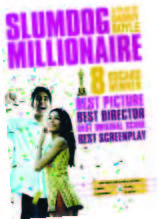
Upper Case Editorial
1 • Slumdog Millionaire (2008) Starring Dev Patel & Irrfan Kahn Patel plays teenager Jamal, a street urchin who rises from the slums of Mumbai to win fame and fortune on the Indian version of Who Wants To Be A Millionaire? The film introduced some of India’s most celebrated actors to mainstream movie audiences and won eight Academy Awards, including Best Picture and Best Director. Directed by Danny Boyle.
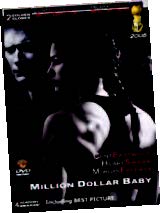
Warner Bros. Pictures
2 • Million Dollar Baby (2004) Starring Hillary Swank, Clint Eastwood & Morgan Freeman Swank stars as a waitress-turned-boxer who enlists the help of old-timers Eastwood and Freeman, who reluctantly guide her toward a $1 million title fight. Million Dollar Baby won four Oscars, including Best Picture. Many consider this the best-ever boxing flick. Directed by Clint Eastwood.
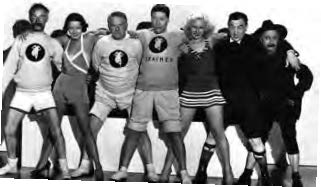
Upper Case Editorial
3 • Million Dollar Legs (1932) Starring W.C. Fields, Jack Oakie & Susan Fleming Oakie and Fields conspire to assemble a team for the Los Angeles Olympics to reverse the fortunes of the bankrupt country of Klopstokia. They lead a cast of slapstick veterans that includes Ben Turpin and Andy Clyde in a comedy so completely untethered that it verges on the avant garde. The Marx Brothers reportedly turned down Million Dollar Legs because it was too crazy. Directed by Edward Cline.
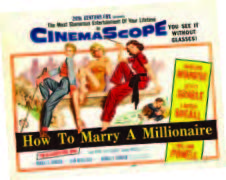
Upper Case Editorial
4 • How To Marry A Millionaire (1953) Starring Marilyn Monroe, Betty Grable & Lauren Bacall A trio of gold-diggers conspires to land millionaire husbands by renting a Manhattan penthouse and posing as high-class New Yorkers. It’s kind of a frivolous story given the talent involved, but it has endured as a classic. Few fans have actually seen it as it was shot— How To Marry A Millionaire was one of the first CinemaScope films, and it is impossible to fit on a standard television screen. Directed by Jean Negulesco.
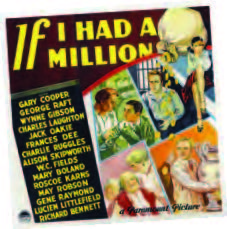
Upper Case Editorial
5 • If I Had A Million (1932) Starring Gary Cooper, Charles Laughton & George Raft Fans of the old TV series The Millionaire should find If I Had A Million intriguing, as the show was based on this imaginative movie. A dying tycoon, played by Richard Bennett, leaves his fortune to eight total strangers, picked at random out of phone book. Seven different directors—including Hollywood legends Ernst Lubitsch and Norman McLeod—were enlisted to tell the eight stories.
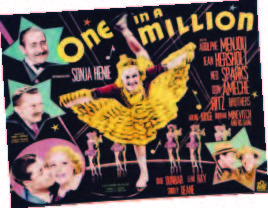
Upper Case Editorial
6 • One In A Million (1936) Starring Sonja Henie, Don Ameche, Adolph Menjou & The Ritz Brothers Sonja Henie made this film—her first of many—shortly after winning her third consecutive Olympic figure skating gold medal at the 1936 Winter Games in Germany. The magnetic Henie became one of Hollywood’s highest-paid stars after playing a Swiss innkeeper’s daughter who becomes an international skating sensation. Directed by Sidney Lanford.
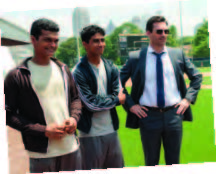
Walt Disney Studios
7 • Million Dollar Arm (2014) Starring John Hamm, Aasif Mandvi, Bill Paxton & Alan Arkin Disney’s very watchable baseball film follows down and-out scout J.B. Bernstein as he discovers a pair of young pitchers in India. Based on a true story, Million Dollar Arm co-stars Suraj Sharma and Madhur Mittal— familiar faces from Slumdog Millionaire. Directed by Craig Gillespie.

Upper Case Editorial
8 • One Million Years B.C. (1966) Starring Raquel Welch This movie is definitely in the running for the all-time guilty pleasure award. Besides Raquel Welch’s iconic cavewoman bikini, it features the work of special effects maestro Ray Harryhausen and fairly good overall production values for a dino-drama. Nine minutes were cut out of the U.S. theatrical version because of violence and a suggestive dance scene. Directed by Don Chaffey.
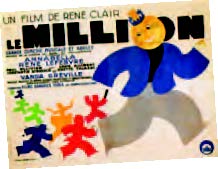
Upper Case Editorial
9 • Le Million (1931) Starring Annabella & Rene Lefevre This French musical comedy is a favorite of film school professors. Le Million marked a true breakthrough in talking pictures. The director detested the quality of sound films of the era and singlehandedly propelled the technology forward. He was hailed as a master after its release. Directed by Rene Clair.

Upper Case Editorial
10 •The Boy Who Stole A Million (1960) Starring Maurice Reyna Paco, a 12-year-old bank messenger, “borrows” a million pesetas from an open vault to help his father repair his taxi. He is pursued through the streets of Valencia, Spain by cops and criminals hoping to get their hands on the money. Shot on location with a talented English-speaking cast, The Boy Who Stole A Million is a sweet, well-made film that is family-friendly without being sappy or syrupy. Directed by Charles Crichton.
Honorable Mention

Upper Case Editorial
Million Dollar Legs (1939) Starring Betty Grable & Jackie Coogan This was the movie that catapulted Betty Grable into the pin-up stratosphere. It co-starred her then-husband Jackie Coogan, a former child star who was a celebrated bandleader at the time. Coogan later played Uncle Fester on The Addams Family. The movie had plenty of star power—including Donald O’Connor, Buster Crabbe and William Holden—but it doesn’t hold up particularly well 80 years later.
Horrible Mention
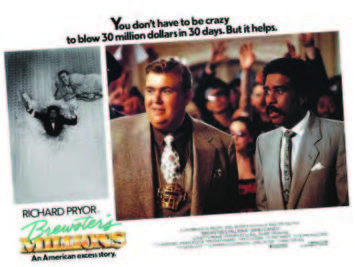 Brewster’s Millions (1985) How a movie featuring Richard Pryor, John Candy and Rick Moranis can have so few laughs remains one of Hollywood’s great mysteries.
Brewster’s Millions (1985) How a movie featuring Richard Pryor, John Candy and Rick Moranis can have so few laughs remains one of Hollywood’s great mysteries.
Headliners

Courtesy of Kean Stage
Sunday • February 10 • 3:00 pm
Kean Stage
David Sanborn Quintet
In Concert
This six-time Grammy-winning saxophonist has assembled a stunning program of straight-ahead jazz tunes for his new quintet—featuring saxophone, trombone, keyboards, bass and drums.

Courtesy of the Prudential Center
Saturday • February 23 • 8:00 pm
Prudential Center
Michael Bublé
In Concert
Michael Bublé comes to The Rock in support of his 8th major studio album, Love, a testament to the power of music and its healing potential—not just for the listener but for Bublé, too.
Saturday • February 23 • 8:00 pm
State Theatre
John Mellencamp
The John Mellencamp Show
The Rock & Roll Hall of Famer’s 2019 tour coincides with the release of his latest album, and features classics such as “Jack and Diane” and “Hurts So Good.”
Saturday • March 2 • 7:00 pm
State Theatre
Lloyd Price, Sonny Turner & Bill Haley’s Comets
Brooklyn Paramount Reunion
Hosted by the Duke of Doo Wop, Harry G, and DJ Radio’s Alan David Stein, this lineup of oldies legends also includes The Skyliners, Cleveland Stills & The Dubs, Gary Troxel & The Fleetwoods, Sonny Turner of The Platters and Jimmy Gallagher of The Passions.

Photo by Eva Rinaldi
Saturday • March 2 • 8:00 pm
Prudential Center
Elton John
Farewell Yellow Brick Road Tour Elton
John’s three-year final Farewell Yellow Brick Road Tour includes this stop at The Rock. His career achievements include more than 30 platinum and multi-platinum albums, over 50 Top 40 hits, and record sales north of 300 million.
Sunday • March 3 • 2:00 & 7:00 pm
State Theatre
RAIN: A Tribute to the Beatles
In celebration of the anniversary of the release of Abbey Road, RAIN brings the group’s greatest hits in a note-for-note theatrical event billed as the next best thing to seeing the Fab Four live.
Saturday • March 9 • 7:00 pm
UCPAC Muddfest 2019
Hard rockers Puddle of Mudd headline an electric show featuring Saliva, Trapt, Saving Abel, and Tantric.
Saturday • March 9 • 8:00 pm
State Theatre
David Bowie Alumni
A Bowie Celebration Celebrate the music of David Bowie with alumni musicians of David Bowie’s bands from across the decades, including his longest-standing member Mike Garson, along with Earl Slick, Gerry Leonard and Carmine Rojas. The concert features an unforgettable and critically acclaimed evening of Bowie songs with an ever-rotating mix of hits and deep cuts.
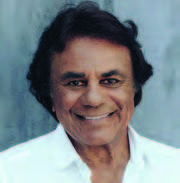
Courtesy of State Theatre of New Jersey
Wednesday • March 13 • 8:00 pm
State Theatre
Johnny Mathis
The Voice of Romance Tour
Johnny Mathis has recorded more than 70 albums and sold millions of records worldwide. He returns to New Brunswick to perform his greatest hits, including “Chances Are,” “It’s Not For Me To Say,” and “Misty.”

Courtesy of the Prudential Center
Wednesday • March 13 • 8:00 pm
Prudential Center
Fleetwood Mac In Concert
The iconic band’s 2019 tour features Mick Fleetwood, John McVie, Stevie Nicks and Christine McVie, along with newcomers Mike Campbell and Neil Finn. Fleetwood Mac has sold more than 100 million records worldwide and was inducted into the Rock and Roll Hall of Fame in 1998.

Courtesy of the State Theatre of New Jersey
Thursday • March 14 • 8:00 pm
State Theatre
Joe Bonamassa In Concert
Grammy-nominated blues-rock guitar icon Joe Bonamassa is touring in support of his new studio album, Redemption. Hailed worldwide as one of the greatest guitar players of his generation, Bonamassa has redefined the blues-rock genre and brought it into the mainstream.

Courtesy of the State Theatre of New Jersey
Friday • March 15 • 8:00 pm
State Theatre
Art Garfunkel In Concert
Art Garfunkel has eight Grammys and a Lifetime Achievement Award to his credit, spanning his partnership with Paul Simon, a long solo career and a Golden Globe-winning turn as a dramatic actor. His show includes iconic hits like “Sound of Silence,” “Scarborough Fair” and “Mrs. Robinson.”

Courtesy of NJPAC
Saturday • March 16 • 7:30 pm
NJPAC
Linda Eder
American Song Since her 12-week victory streak on Star Search, Linda Eder has developed into one of the most powerful and versatile voices of her generation, with a diverse repertoire that spans musical theater, American standards, pop, country, jazz and more.

Courtesy of the State Theatre of New Jersey
Saturday • March 17 • 3:00 pm
State Theatre
Sir James Galway In Concert
The living legend of the flute, Sir James Galway, returns to the State Theatre New Jersey with renowned flutist Lady Jeanne Galway and pianist Michael McHale. Galway’s illustrious career includes over 30 million album sales and passionate work in music education.

Courtesy of Kean Stage
Saturday • March 23 • 7:30 pm
Kean Stage
Patina Miller In Concert
Miller earned a Tony nomination for her 2011 Broadway debut in Sister Act and later won a Tony for her role in Pippin. She made her feature film debut in The Hunger Games: Mockingjay and had a featured role in Madam Secretary.
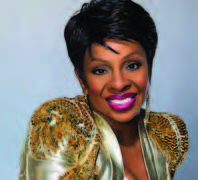
Courtesy of the State Theatre of New Jersey
Sunday • March 24 • 7:30 pm
State Theatre
Gladys Knight In Concert
Seven-time Grammy winner Gladys Knight performs her iconic hits, including “Midnight Train to Georgia,” “I’ve Got to Use My Imagination” and “Best Thing That Ever Happened to Me.” She has 11 #1 R&B singles to her credit and was inducted into the Rock & Roll Hall of Fame along with her group, The Pips.
Sunday • March 24 • 8:00 pm
Prudential Center
TobyMac Hits Deep Tour
The leading light in Christian hip hop comes to Newark with a show featuring music from his first new collection in three years. After earning acclaim as a member of DC Talk in the 1980s, TobyMac embarked on a solo career that has produced seven Grammy awards.

Courtesy of the State Theatre of New Jersey
Tuesday • March 26 • 8:00 pm
State Theatre
Indigo Girls In Concert
With over 14 million records sold, the folk rock duo of Amy Ray and Emily Saliers is known for its award-winning albums and social activism. They met in elementary school, began performing in high school and won a Grammy in 1990.
Friday • March 29 • 8:00 pm
NJPAC
Billy Cox, Joe Satriani & Johnny Lang Experience Hendrix Tour
Jimi Hendrix called his stage performance his Electric Church. Experience Hendrix captures this spirit thanks to virtuoso guitarists like Joe Satriani and Johnny Lang and former Experience bandmate Billy Cox.

Courtesy of NJPAC
Saturday • March 30 6:00 & 8:30 pm
NJPAC
Mandy Gonzalez Fearless!
Mandy Gonzalez, aka Angelica in the smash hit Hamilton, makes her Chase Room debut. Gonzalez performs powerful songs by contemporary composers like Lin-Manuel Miranda and Tom Kitt, as well as a stirring reinterpretation of Bruce Springsteen’s “Born to Run.”
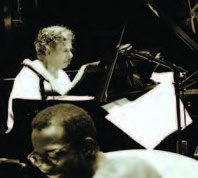
Courtesy of NJPAC
Friday • April 12 • 8:00 pm
NJPAC
Chick Corea Trilogy In Concert
Keyboardist Chick Corea, bassist Christian McBride and drummer Brian Blade gather to form this stellar trio, which earned two Grammys for the 2014 three-CD set Trilogy, a live recording that combined original compositions with standards like “The Song is You,” “How Deep is the Ocean?” and “My Foolish Heart.” Pianist Joey Alexander opens as special guest.
Saturday • April 13 • 8:00 pm
NJPAC
Kashmir The Ultimate Led Zeppelin Tribute
Kashmir, The Ultimate Led Zeppelin Tribute, transports audiences back to the glory days of one of the most iconic rock units of all time, hitting every stop and every classic Zeppelin hit along the way. Created by acclaimed vocalist Jean Violet in 2000, Kashmir has grown from the streets of New York into one of the world’s top Led Zeppelin tribute bands.

Courtesy of the State Theatre of New Jersey
Monday • April 15 • 8:00 pm
State Theatre
Chicago In Concert
Did you know that Chicago was the first American rock band to chart Top 40 albums in six consecutive decades? The group’s hits include “25 or 6 to 4,” “Saturday In The Park,” “Feelin’ Stronger Every Day” and “Make Me Smile.”
Saturday • April 27 • 2:00 & 7:30 pm
NJPAC
Zakir Hussain Masters of Percussion
Grammy-winning tabla virtuoso Zakir Hussain is regarded as one of the world’s greatest percussionists. He returns to Newark’s Victoria Theater with a handpicked ensemble of master musicians and dancers. Throughout his career, Hussain has elevated the status of the tabla—not only throughout India but with world music fans around the globe.
Song, Dance & Drama
 January 31 to March 3
January 31 to March 3
Paper Mill Playhouse
My Very Own British Invasion
A fable of young love set against the backdrop of the exploding 1960s music scene—when England launched the little dust-up that became known as The British Invasion. Based on the experiences of Peter Noone, who was just a teenager willing to sacrifice international stardom for the sake of the girl he loves, the show features more than two dozen chart-topping hits from all the best British bands of the era. Tony Award winner Jerry Mitchell choreographs and directs.
 Saturday • February 9 • 7:00 pm
Saturday • February 9 • 7:00 pm
UCPAC
Ain’t Misbehavin’
The free concert version of the award-winning musical revue, Ain’t Misbehavin’, is presented on the UCPAC Main Stage to kick off a month-long celebration featuring programming honoring Black History Month. Ain’t Misbehavin’ pays tribute to the Harlem Renaissance, an era of growing creativity, cultural awareness, and pride.

Courtesy of Kean Stage
Saturday • February 16 • 7:30 pm
Kean Stage
Meredith Baxter & Michael Gross Love Letters
The Family Ties co-stars are together again, this time in A.R. Gurney’s Love Letters. This Pulitzer-nominated play is a tender, tragi-comic and nuanced examination of the shared nostalgia, missed opportunities, and the deep closeness of two lifelong, complicated friends.

Courtesy of NJPAC
Saturday • February 16 3:00 & 7:00 pm
NJPAC
Maurice Hines Tappin’ Thru Life
Broadway legend Maurice Hines, accompanied by The DIVA Jazz Orchestra, revisits stopping points along his career in a song-and-dance celebration that pays tribute to his brother, Gregory Hines, and other performers who inspired him—from Frank Sinatra to Lena Horne. Hines is backed by his tap protégés, The Manzari Brothers.
February 22 to March 2
Kean Stage
A Midsummer Night’s Dream
Lunatic lovers, nefarious fairies, atrocious artistes and rambunctious royals star in Shakespeare’s most beloved comedy.

Courtesy of NJPAC
Friday • March 1 • 8:00 pm
NJPAC
Snoop Dogg and Tamar Braxton Redemption of a Dogg
Award-winning writer, director and producer Je’Caryous Johnson comes to NJPAC with his new stage play, Redemption of a Dogg, starring hip-hop legend Snoop Dogg and Tamar Braxton of Braxton Family Values. Redemption of a Dogg, the follow-up to the popular stage production, Set It Off, is set to a soundtrack of over 25 years of Snoop’s greatest hits.
Saturday • March 2 • 7:30 pm
NJPAC
Rennie Harris/Puremovement Lifted
Rennie Harris and his Puremovement hip-hop/street dance company have set their latest work, Lifted, to house and gospel music, featuring a live choir. The story is loosely inspired by Charles Dickens’s Oliver Twist.

Courtesy of Kean Stage
Saturday • March 16 • 7:30 pm
Kean Stage
Murphy’s Celtic Legacy
This invigorating performance of traditional Irish dance—with dark cinematic undertones—is an inspiring tale of courage and loss created by Chris Hannon, a former lead in Lord of the Dance.
Saturday • March 16 • 2:00 & 8:00 pm
State Theatre
Russian National Ballet Swan Lake
The Russian National Ballet brings the world’s most beloved program to life: the story of a princess turned into a swan by an evil sorcerer’s curse. This performance features choreography by Petipa and an unforgettable score by Tchaikovsky.
April 2 to 4 • 8:00 pm
State Theatre
Rent
The 20th Anniversary Tour
In the 1990s, Rent changed the landscape of American theatre. Jonathan Larson’s Tony- and Pulitzer-winning musical—a re-imagining of Puccini’s La Bohème— continues to speak loudly and defiantly to audiences across generations and all over the world.
 April 4 to May 5
April 4 to May 5
Paper Mill Playhouse
Benny & Joon
A New Musical Based on the 1993 film starring Johnny Depp and Mary Stuart Masterson, this new musical is a smart, funny, tender-hearted celebration of love—between children and parents, romantic partners, friends and siblings— and embraces a difficult subject with warmth, honesty and wit.
Saturday • April 6 • 7:00 pm
NJPAC
Carolyn Dorfman Dance Jersey Moves!
The stunning dancers of New Jersey-based choreographer Carolyn Dorfman’s multi-ethnic company are known for high-energy, technically demanding dance and powerful storytelling—connecting life and dance in bold, athletic and dramatic terms, and taking audiences on intellectual and emotional journeys that illuminate and celebrate the human experience.
Thursday • April 11 • 8:00 pm
State Theatre
Bill T. Jones/Arnie Zane Live On Stage
The Bill T. Jones/Arnie Zane Company, one of the most innovative and powerful forces in the dance-theater world, makes its State Theatre debut, blending visual imagery and a stylistic approach to movement. The company’s program will include the dance piece, A Letter to My Nephew, accompanied by a score by composer Nick Hallett, performed by baritone Matthew Gamble.
Family Friendly

Courtesy of NJPAC
Saturday • February 16 • 3:00 pm
NJPAC
Darci Lynne & Friends
Darci Lynne is accompanied by her musical friends, including a diva-esque rabbit (Petunia), a shy and soulful mouse (Oscar), and a sarcastic old woman (Edna). Singing through her friends helped the young entertainer find a voice inside that she didn’t know she had, and helped her overcome a lifelong struggle with shyness. Lynne was the winner of Season 12 of America’s Got Talent.
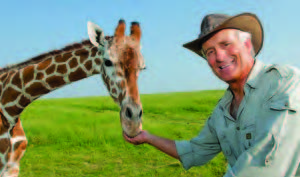
Courtesy of the State Theatre of New Jersey
Monday • February 18 10:00, 12:30 & 3:00 pm
State Theatre
Jack Hanna Into the Wild Live
America’s most beloved animal expert, Jack Hanna, brings his Emmy-winning television series to the stage, featuring some of the world’s most spectacular animals. Jack also shares humorous stories and amazing exclusive footage from his worldwide adventures.

Courtesy of the State Theatre of New Jersey
Friday • March 22 • 8:00 pm
Saturday • March 23 • 2:00 & 8:00 pm
State Theatre
Finding Neverland
Finding Neverland tells the incredible story behind one of the world’s most beloved characters, Peter Pan. Playwright J.M. Barrie struggles to find inspiration until he meets four young brothers and their beautiful widowed mother. The magic of Barrie’s classic tale springs to life in this heartwarming theatrical event.

Courtesy of the State Theatre of New Jersey
Saturday • March 30 3:00 & 5:00 pm
State Theatre
B: The Underwater Bubble Show
The wondrous underwater world of Bubblelandia and all its beautiful sea creatures come to life in this imaginary journey through the deep blue sea. Inspired by childhood favorites like Alice in Wonderland, The Little Mermaid, and Peter Pan, B—The Underwater Bubble Show is a lavish musical production featuring dancers and acrobats, original music, and fantastic stage effects including lasers, flying foam and soap bubbles to create a dreamlike underwater atmosphere.
Saturday • April 13 • 11:00 am
NJPAC
Mermaid Theatre Rainbow Fish
The one-of-a-kind, puppet-filled adaptation of the popular book by Marcus Pfister is an NJPAC favorite. Mermaid Theatre is known internationally for its delightful stage adaptations of beloved children’s literature. The company employs innovative puppetry, striking scenic effects, evocative original music, and gentle storytelling that stimulates young minds.
Saturday • April 13 • 8:00 pm
NJPAC
Sunday • April 14 • 3:00 pm
State Theatre
New Jersey Symphony Orchestra Mary Poppins in Concert
This family-friendly, symphonic cinema event features the Oscar-winning classic Disney film unfolding on the big screen with the New Jersey Symphony Orchestra performing the charming and delightful musical score.
April 26 to April 28
State Theatre
Sesame Street Live Make Your Magic
When magician Justin visits Sesame Street to put on a magic show for the whole neighborhood, Elmo wants to be part of the big event. But there’s one problem…he doesn’t know how to do magic. Elmo learns that you can do anything you set your mind to if you just keep trying.
 April 26 to May 4
April 26 to May 4
NJPAC
Shen Yun
The world’s premier classical Chinese dance and music company returns to Newark with its latest epic production. Through the universal language of music and dance, Shen Yun weaves a wondrous tapestry of heavenly realms, ancient legends, modern heroic tales, and treasured ethnic traditions—taking audiences on a stunning, immersive journey through 5,000 years of traditional Chinese culture.
Funny You Should Say That

Courtesy of NJPAC
Saturday • February 16 • 7:00 pm
NJPAC
Russell Peters Deported World Tour
Russell Peters leaves no cultural stereotype unturned in his Deported World Tour. An early YouTube sensation, Peters was recently included in Rolling Stone’s 50 Best Comedians of All Time.

Courtesy of NJPAC
Saturday • February 23 • 7:30 pm
NJPAC
Tom Papa Live On Stage
New Jersey’s own Tom Papa is a true quadruple-threat. He excels as a stand-up comedian, comedy writer, voiceover specialist and dramatic actor. Make that quintuple-threat…he recently released his first book, Your Dad Stole My Rake: And Other Family Dilemmas.
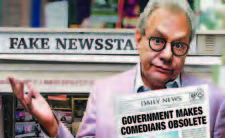
Courtesy of the State Theatre of New Jersey
Thursday • March 7 • 8:00 pm
State Theatre
Lewis Black The Joke’s On Us Tour
Lewis Black returns to New Brunswick with a new show, ripping subject matter from the headlines and ratcheting up his anger to a fever pitch. Following his star turn on The Daily Show, Black has won Grammys for two of his eight comedy albums, and authored three bestselling books.

Courtesy of NJPAC
Saturday • March 9 • 8:00 pm
NJPAC
Ryan Hamilton Live on Stage Rubber-faced
Ryan Hamilton, one of the country’s fastest-rising entertainers, makes his NJPAC debut after opening for Jerry Seinfeld at Carnegie Hall. His sarcastic observational humor covers everything from skydiving to the challenges of being single.
Wednesday • March 20 • 7:30 pm
Prudential Center
Impractical Jokers
The Cranjis McBasketball World Comedy Tour The Tenderloins—Joe Gatto, James Murray, Brian Quinn and Sal Vulcano—star in TruTV’s hit series, Impractical Jokers. They bring their bag of public pranks to The Rock for an outrageous multimedia stage show.
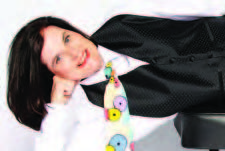
Courtesy of NJPAC
Friday • April 12 • 7:00 pm
NJPAC
Paula Poundstone Live On Stage
Paula Poundstone’s smart, observational humor and spontaneous wit have made her a favorite of NPR audiences and stand-up comedy fans. She also appears on Nobody Listens to Paula Poundstone, a weekly podcast co-hosted by Adam Felber—her friend and fellow panelist on Wait, Wait…Don’t Tell Me! She recently authored her second book, The Totally Unscientific Study of the Search for Human Happiness, which debuted at #1 on the Amazon Humor bestseller list.
Classical Performances

Courtesy of the State Theatre of New Jersey
Sunday • February 24 • 3:00 pm
State Theatre
Czech National Symphony Orchestra 100 Years of Leonard Bernstein
The Czech National Symphony Orchestra, with Grammy-winning Mezzo-Soprano Isabel Leonard—and led by conductor John Mauceri—celebrates the legacy of Leonard Bernstein with a program entitled 100 Years of Leonard Bernstein.
 Saturday • March 2 • 8:00 pm
Saturday • March 2 • 8:00 pm
Sunday • March 3 • 3:00 pm
NJPAC
New Jersey Symphony Orchestra In Concert
Hans Graf conducts and Van Cliburn finalist Jeffrey Kahane is featured on piano in a program that includes works by Ravel, and Shostakovich, as well as Beethoven’s Piano Concerto No. 4.
 Thursday • March 7 • 1:30 pm Friday • March 8 • 8:00 pm
Thursday • March 7 • 1:30 pm Friday • March 8 • 8:00 pm
Sunday • March 10 • 3:00 pm
State Theater
New Jersey Symphony Orchestra In Concert
Jun Markl conducts and Ingrid Fliter is featured on piano in a program that includes works by Mendelssohn and Britten, as well as La Mer and Prelude to the Afternoon of a Faun by Debussy.
 Friday • March 15 • 8:00 pm
Friday • March 15 • 8:00 pm
NJPAC
Philadelphia Orchestra In Concert
Yannick Nézet-Séguin conducts the Philadelphians in Schubert’s great and noble Symphony No. 9, and young pianist Jan Lisiecki plays Mendelssohn. The Philadelphia Orchestra was cultivated under Leopold Stokowski, Eugene Ormandy, Riccardo Muti and now Yannick Nézet-Séguin. The program also includes Haydn’s overture to his opera L’Isola Disabitata.
 Saturday • March 23 • 8:00 pm
Saturday • March 23 • 8:00 pm
NJPAC
New Jersey Symphony Orchestra In Concert
The incomparable Xian Zhang conducts and Johannes Moser is featured on cello in a program that includes works by Schumann and Brahms, as well as Andrew Norman, Music America’s Composer of the Year in 2017. Norman’s Cello Concerto is making its East Coast premiere.
EDGE takes you inside the area’s most creative kitchens.
 The Thirsty Turtle • Pretzel Burger
The Thirsty Turtle • Pretzel Burger
1-7 South Ave E. • CRANFORD (908) 324-4140 • thirstyturtle.com
Our mouthwatering burger is topped with American cheese, bacon, shredded lettuce, and Russian dressing on a soft pretzel bun…this classic evokes nostalgia.
— Chef Rich Crisonio
 The Thirsty Turtle • Irish Nachos
The Thirsty Turtle • Irish Nachos
186 Columbia Turnpike • FLORHAM PARK (973) 845-6300 • thirstyturtle.com
These special nachos are made with potato crisps, bacon, cheddar and Monterey Jack, scallions and Guinness sour cream…truly a house favorite!
— Chef Dennis Peralta
 The Famished Frog • Assorted Flatbreads
The Famished Frog • Assorted Flatbreads
18 Washington St. • MORRISTOWN (973) 540-9601 • famishedfrog.com
My unique spin on the California flatbread was inspired by my work with world-famous chef, Wolfgang Puck.
— Chef Ken Raymond
 Arirang Hibachi Steakhouse • Wasabi Crusted Filet Mignon
Arirang Hibachi Steakhouse • Wasabi Crusted Filet Mignon
1230 Route 22 West • MOUNTAINSIDE (908) 518-9733 • partyonthegrill.com
We prepare a crusted 8-ounce filet mignon served with gingered spinach, shitake mushrooms, and a tempura onion ring.
 Daimatsu • Sushi Pizza
Daimatsu • Sushi Pizza
860 Mountain Ave. • MOUNTAINSIDE (908) 233-7888 • daimatsusushibar.com
This original dish has been our signature appetizer for over 20 years. Crispy seasoned sushi rice topped with homemade spicy mayo, marinated tuna, finely chopped onion, scallion, masago caviar, and ginger. Our customers always come back wanting more.
— Chef Momo
 Luciano’s Ristorante & Lounge • Warm Goat Cheese Salad
Luciano’s Ristorante & Lounge • Warm Goat Cheese Salad
1579 Main Street • RAHWAY (732) 815-1200 • lucianosristorante.com
The warm goat cheese salad with tender greens and a mulled cabernet dressing and toasted pine nuts is a signature appetizer at Luciano’s, where fresh ingredients and personable service in a beautiful Tuscan décor create a fine dining experience. Our menus are seasonally influenced to feature the best of what’s available in the market.
— Joseph Mastrella, Executive Chef/Partner
 Garden Grille • Grilled Chicken Paillard
Garden Grille • Grilled Chicken Paillard
304 Route 22 West • SPRINGFIELD (973) 232-5300 • hgispringfield.hgi.com
Grilled chicken paillard with roasted corn, asparagus, cauliflower, baby arugula and grape tomato, extra virgin olive oil & aged balsamic.
— Chef Sean Cznadel
 LongHorn Steakhouse • Outlaw Ribeye
LongHorn Steakhouse • Outlaw Ribeye
272 Route 22 West • SPRINGFIELD (973) 315-2049 • longhornsteakhouse.com
LongHorn Steakhouse of Springfield is celebrating its One Year Anniversary. Come celebrate with us! Join us for Lunch or Dinner. We suggest you try our fresh, never frozen, 18 oz. bone-in Outlaw Ribeye – featuring juicy marbling that is perfectly seasoned and fire-grilled by our expert Grill Masters.
— Anthony Levy, Managing Partner

Outback Steakhouse • Bone-In Natural Cut Ribeye
901 Mountain Avenue • SPRINGFIELD (973) 467-9095 • outback.com
This is the entire staff’s favorite, guests rave about. Bone-in and extra marbled for maximum tenderness, juicy and savory. Seasoned and wood-fired grilled over oak.
— Duff Regan, Managing Partner
 Arirang Hibachi Steakhouse • Volcano Roll
Arirang Hibachi Steakhouse • Volcano Roll
23A Nelson Avenue • STATEN ISLAND, NY (718) 966-9600 • partyonthegrill.com
Hot-out-of-the-oven, crab, avocado and cream cheese rolled up and topped with a mild spicy scallop salad.
 Ursino Steakhouse & Tavern • House Carved 16oz New York Strip Steak
Ursino Steakhouse & Tavern • House Carved 16oz New York Strip Steak
1075 Morris Avenue • UNION (908) 977-9699 • ursinosteakhouse.com
Be it a sizzling filet in the steakhouse or our signature burger in the tavern upstairs, Ursino is sure to please the most selective palates. Our carefully composed menus feature fresh, seasonal ingredients and reflect the passion we put into each and every meal we serve.
Do you own a local restaurant and want to know how your BEST DISH could be featured in our Chef Recommends restaurant guide?
Call us at 908.994.5138
The word “million” has to be one of the handiest in the English language. It conveys with elegant simplicity a number that is, at once, tangible and inconceivably large. Which means that anyone can use it to convey a wide range of thoughts, in any number of ways—including some of history’s most quotable people…
Let your soul stand cool and composed before a million universes.
—Walt Whitman
If the boy and girl walk off into the sunset hand-in-hand in the last scene, it adds ten million to the box office.
—George Lucas
The company accountant is shy and retiring. He’s shy a quarter of a million dollars…that’s why he’s retiring.
—Milton Berle
You can get a million comments about how beautiful you look and how awesome you are, but the one comment that says they hate you and you’re ugly is the one that sticks.
—Kendall Jenner
When I take action, I’m not going to fire a $2 million missile at a $10 empty tent and hit a camel in the butt. It’s going to be decisive.
—George W. Bush
The President has only 190 million bosses. The Vice President has 190 million and one.
—Hubert H. Humphrey
Money doesn’t make you happy. I now have $50 million but I was just as happy when I had $48 million.
—Arnold Schwarzenegger
I’ve kind of fashioned my life after a Slinky. Bend me in a million shapes, and eventually I’ll spring back to what I originally was.
—Sylvester Stallone
One death is a tragedy; one million is a statistic.
—Josef Stalin
Each time a man stands up for an ideal, or acts to improve the lot of others, or strikes out against injustice, he sends forth a tiny ripple of hope, and crossing each other from a million different centers of energy and daring, those ripples build a current that can sweep down the mightiest walls of oppression and resistance.
—Robert F. Kennedy
David Levy adores the purity of geometric forms. He is drawn to bridges, automobiles and musical instruments. Levy’s crisp, elegant lines, bold colors and the visual record of his brushstrokes move the eye and the intellect.

“Dubliners’ Delight” Acrylic, 24″x36″ 2013
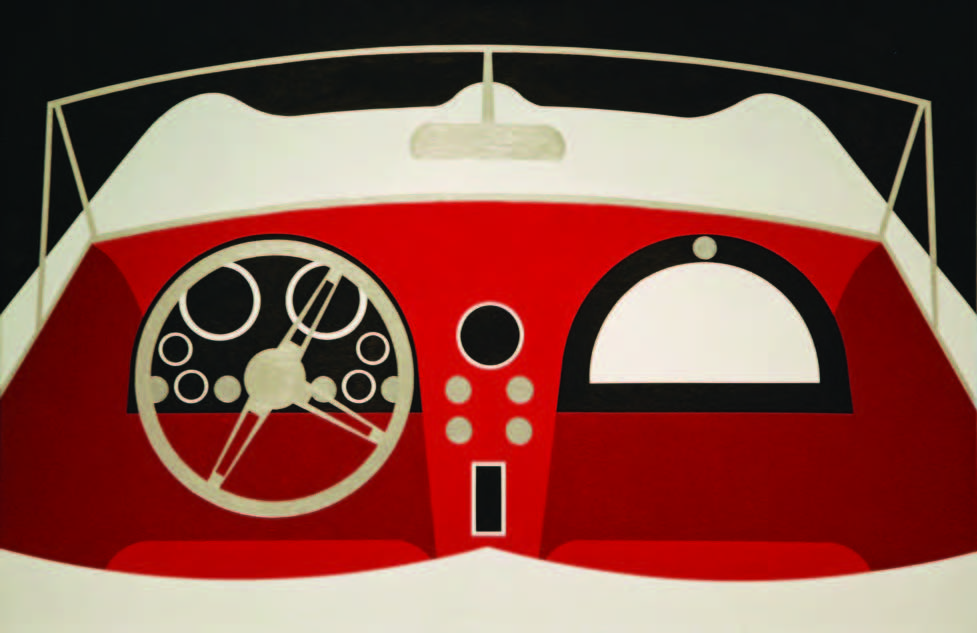
“1967 Corvette” Acrylic, 24″x36″ 2014

“1968 Muscle Car” Acrylic, 24″x36″ 2013
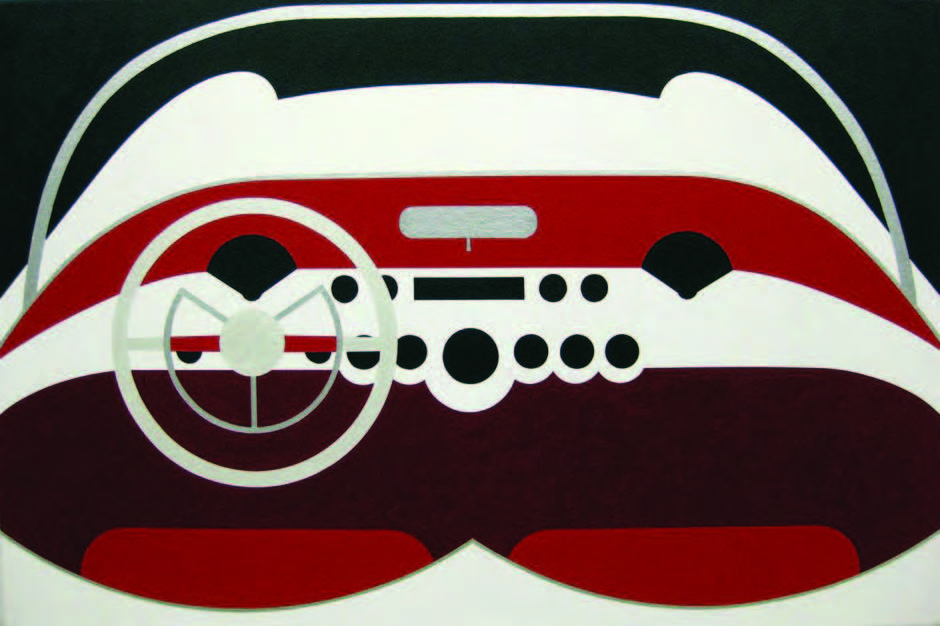
“1963 Corvette” Acrylic, 24″x36″ 2012

“Dubliners’ Delight” Acrylic, 24″x36″ 2013

“Rhode Island Red” Acrylic, 28″x22″ 2012
 Born in Manhattan and raised on Long Island, David Levy has been a New Jersey resident for more than 30 years. Levy was an Optical (Op) artist at age 15—well before he established his hard-edge style of painting he dubbed Engineered Abstraction as a Fine Arts major at Lehigh University, where he also earned a master’s degree in Art History. For more on David Levy’s story, visit edgemagonline.com.
Born in Manhattan and raised on Long Island, David Levy has been a New Jersey resident for more than 30 years. Levy was an Optical (Op) artist at age 15—well before he established his hard-edge style of painting he dubbed Engineered Abstraction as a Fine Arts major at Lehigh University, where he also earned a master’s degree in Art History. For more on David Levy’s story, visit edgemagonline.com.
New Jersey’s auto racing history is full of surprising twists and turns. Here are a dozen fun facts you need to know…

Courtesy of Martin Truex Jr.
Martin Truex Jr. (left), the 2017 NASCAR champion, grew up in South Jersey, where his father owned Sea Watch International, one of the country’s major seafood purveyors. Martin Sr. was called the “Clam King.”
Mark Donohue, winner of the 1972 Indianapolis 500, grew up in Summit and attended the Pingry School. He graduated from Brown University with a degree in Mechanical Engineering.
During the Great Depression, auto racing’s top builders, mechanics and drivers called “Gasoline Alley” in Paterson’s Fifth Ward home.
During the 1980s, the Meadowlands Sports Complex was home to the Meadowlands Grand Prix. It was held on a course laid out in the stadium parking lot and offered the second-highest purse in the sport, behind the Indy 500.

Indian Motorcycle
During the 1920s, New Jersey’s most famous racer was Orie Steele (left), who was nearly unbeatable in motorcycle Hillclimb events—a hugely popular spectator sport in the years between the two World Wars.
One of the country’s first auto racing tracks was a half-mile dirt oval at the Trenton Fairgrounds. It was enlarged, paved and renamed the Trenton Speedway in 1957, and was home to NASCAR’s Northern 300. Today it is the location of the Grounds for Sculpture.
In 1909, 22-year-old Alice Huyler Ramsey of Bergen County—accompanied by a 16-year-old friend and two older sisters-in-law—became the first woman to drive across the country. It took her 59 days.
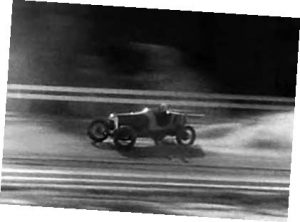
Warner Bros.
The Ho-Ho-Kus Speedway (right) in Bergen County regularly drew crowds of 5,000 or more to its Saturday races in the 1920s and 30s. Director Howard Hawks filmed heart-pounding racing scenes there for the 1932 Jimmy Cagney film The Crowd Roars.
2012 NHRA Top Fuel champion Antron Brown was born in Trenton and grew up in Chesterfield. He began racing dirt bikes on the family’s property at the age of 4.
Ray Evernham, the crew chief behind Jeff Gordon’s greatest successes, was born and raised in Monmouth County, where his father owned a service station. He began building and racing cars at the age of 14.
Tri-City Stadium, a midget car and motorcycle track, covered a mere fifth of a mile. Each time a rider completed a lap, he passed through slivers of Newark, Irvington and Union.
Raceway Park in Old Bridge, opened in 1965, became one of the nation’s top drag racing venues. In 2018, it ended its association with drag racing after more than a half-century, citing insurance and other costs.
Home improvement begins with the wisdom of the crowd.
By Sarah Rossbach
I’m standing precariously on a small, beautifully landscaped but overgrown traffic island, allergies raging, clippers in hand, debating whether to deadhead a browned Montauk daisy or leave it to feed the birds in winter. Cars are whizzing by, sometimes inches from my fellow gardeners, who are raking dried leaves. You have every right to wonder: Why do we— accomplished women of a certain age—risk our health and lives, and subject ourselves to the stiff backs and unpaid toils of weeding and pruning local mini-parks?
A dirty pick-up truck slows down and a man with a beard leans out the window and shouts. Is it something vulgar? No. He merely yells above the traffic din, “You make our town more beautiful!” He adds with a smile, “When you’re done, my place could use your help!”
That’s all we, members of our local garden club, need… knowing that we’re appreciated and making a difference in our community.

www.istockphoto.com
I wasn’t always this civic-minded. My friend Andrea reminds me that 15 years ago she asked me if I wanted to join and my answer was an adamant No! Yet here I am, a member in good standing, watering and weeding public gardens, propagating plants from cuttings and seeds, entering flower shows, butchering a blooming peony “tree” (it’s really a shrub) to create a dazzling floral design. What happened? How did I go from blissfully forgetting to attend meetings—and receiving stern warnings—to planting and nurturing flowers months (and sometimes years) ahead to enter a statewide flower show?
Pick your answer: Garden club (a) saved my life; (b) ate
my life; (c) enriched my life; (d) all of the above.
Bingo. Yes, (d) is correct.
As a writer and consultant with limited free time, I scrupulously avoid committing to book clubs, tennis teams, bridge games and girls’ nights out. Yet, step-by-step, I became captivated by nearly all disciplines of my garden club as well as the camaraderie of working and lunching with members of all ages. Some members joke that their enjoyment and enthusiasm of their garden clubs is “drinking the Kool-Aid,” but that metaphor implies that they are unwitting victims. I’m no victim; I’m more of an addict, a horti-holic seeking the next horticultural high. There. I said it. Don’t even try to cure me.
The addiction starts slowly. Funny things happen when you join a garden club. First it’s the mild stuff. You get a craving for the informative, often amusing, lectures on beneficial bugs, composting, historic gardens, holiday floral arrangements. Then a planting workshop might start you hankering for propagating herbs, lettuces and annual flowers. And before you know it, you have an overwhelming desire to get into more hardcore pursuits, the headier cultivation arts, such as starting a new plant or two from cuttings. I knew I was hooked when I requested a grow light for Christmas to propagate plants during winter’s dark months. And then, in spring, there’s no resisting the sensual pleasures of viewing your garden’s kaleidoscopic colors and experiencing the scents of the aromatic herbs, flowers and fruits of your labors. Others are lured in by a floral design workshop and demonstration and, voila, creativity blossoms: Discovering you can create masterpiece after masterpiece with plant material that you’ve grown in your garden is pretty heady stuff. Or you might catch the conservation bug as one friend—a former climate-change denier—did. Now she is an ardent environmental activist. Score one for saving our planet!

www.istockphoto.com
Garden club membership can be dizzying. You find you’re accomplishing feats way out of your wheelhouse. I got elbowed into applying for a grant to partner with a local national park to remove invasive species and replace them with native plants and shrubs. Score another for horticulture, civics and conservation all rolled into one! Actually it’s been an enjoyable and rewarding project for all involved, including our garden club, the park seasonal workers, the local high school and, we hope, the Boy and Girl Scouts in the future.
Home Games
As I age, inanimate physical objects mean less to me. On my birthday, don’t send a dozen cut roses. Drop off, instead, transplanted peonies or a pond lotus. Nothing symbolizes enduring friendship and love like a beautiful perennial that I can plant and enjoy year after year. Even when the garden is dormant, I still have bulbs and the joy and sense of satisfaction I get from the moment a fragrant blossom opens on a paperwhite, or a stunning exotic flower appears on an amaryllis stalk.
Which is why, in the dozen-plus years I have been a garden club member, I have come to regard this association as a very special kind of “home improvement.” Between horticulture lectures and helpful advice from my fellow members, my garden is more varied and natural appearing. And now I pay attention to whether a plant will attract or feed a bee or butterfly, important crop pollinators. So now milkweed, salvia and beebalm are ensconced among my flowerbeds. I love to bring in greens in winter and flowers the rest of the year to arrange in my own unique way for dinner parties for all to enjoy. There is one complaint from my husband: it’s the pots, trowels, bags of soil that fill my office/potting shed with the promise of warmer, greener days to come.
I admit I am an enabler, luring my friends to join my garden club with genuine enthusiasm. Garden clubs are down-to-earth. One novice noted that few garden club members sport fingernail polish What’s the point? It will only chip with repotting. And a garden club can be life-changing in unexpected ways. I’ve known a few shrinking violets and wallflowers who have personally blossomed from the exposure to all that garden clubs have to offer.

www.istockphoto.com
As winter grinds on, it’s actually a good time to survey the garden club scene in your area. If you are interested in joining a garden club, there are a few different gardening organizations—all wonderful. It’s worth shopping around to see where you would best fit and enjoy the programs and club members. Choosing any club is a win-win and attending an open-to-the-public meeting is an excellent way to start. Whatever club you join, you will come to appreciate the art and science of nurturing a garden…and cultivate a whole new world of knowledge, skills and friends.
EDITOR’S NOTE: Sarah Rossbach has written for EDGE on a wide range of topics. She is a member of the Rumson Garden Club.
We welcome the community to our programs that are designed to educate and inform. Programs are subject to change.
SEMINARS
Visit www.TrinitasRMC.org for seminar listings or check for updates on our Facebook page, www.facebook.com/TrinitasRMC.
TUESDAY, FEBRUARY 12
5:30 PM
Going Red for Women
Trinitas Regional Medical Center will host this annual event. Come learn about “Women and Heart Disease.” The public is welcome to this free event, but registration is limited. Call 908.994.5139 to register.
Presenter: Dr. Mirette Habib Interventional Cardiologist, Trinitas RMC
Garden Restaurant, 943 Magie Avenue, Union
WEDNESDAY, FEBRUARY 20
1:00 PM
Be the Match Bone Marrow Registry Drive
Did you know that a spinal tap is not required to donate your bone marrow? All Trinitas community members are urged to come learn how to help save a life by supporting Brandon Dillagard, an 8-year-old New Jersey resident, and many other local patients searching for a match. As a parent you’re only ever a 50 percent match for your own child. Seventy percent of the time, a complete stranger can save your loved one’s life.
Stem cell is a cure for blood cancer patients. Learn how YOU can help save a life. You could be the lifeline for a patient searching for a match. For more information, call 895-494-6882. If you can’t make it, text 61474 to join. Hit enter “cure65,” and help save a life.
Trinitas Café in the main hospital, 225 Williamson St.
TCCC SUPPORT GROUPS
Conference Room A or Conference Room B Trinitas Comprehensive Cancer Center 225 Williamson Street, Elizabeth New Jersey 07207
All events take place from 1:00 – 3:00 PM. Call (908) 994-8535 for 2018 schedule.
Living with Cancer
Viviendo con Cáncer, Grupo De Apoyo
Living with Breast Cancer
Viviendo con Cáncer de Mama
Caregiving Support Group
Viviendo con Cáncer, Grupo De Apoyo
Viviendo con Cáncer, Apoyo Familiar
For more information on any TCCC support programs and to RSVP, please contact Roxanne Ruiz-Adams, LSW, (908) 994-8535. Por favor llame al (908) 994-8535 para confirmar su asistencia.
SPECIAL PROGRAMS
Health Services with Women In Mind
Trinitas helps provide women access to vital health services with a focus on preventive measures. These include educational programs and cancer screenings. Programs offered in English and Spanish.
To learn more about these services, contact Amparo Aguirre, (908) 994-8244 or at amaguirre@trinitas.org
Ask the Pharmacist: Medication Management
Free of charge, by appointment only. Monthly on the 4th Tuesday, 11:30 AM – 1:00 PM
Call (908) 994-5237
TRINITAS HEALTH FOUNDATION EVENTS
SATURDAY, FEBRUARY 23
15th Annual Evening at the Races
Meadowlands, Rutherford, NJ
VIP Reception 5:30 PM Gourmet Dinner 6:30 PM First Race 7:15 PM
THURSDAY, MAY 9 6:00 PM
Annual Gala Dinner Dance
The Venetian, Garfield, NJ
Join the foundation at this beautiful black tie event complete with fantastic live music, dancing, an incredible auction and amazing food and drink.
For more information about the Foundation or to learn more about its fundraising events, (908) 994-8249 or kboyer@trinitas.org.
Proceeds from these and other events benefit the patients of Trinitas Regional Medical Center. Making reservations for Foundation events is fast and easy on your American Express, MasterCard, Visa or Discover card!
MEDICAL AND BEHAVIORAL HEALTH SUPPORT GROUPS
Diabetes Management Support Group
Monthly, First Monday, 2:00 – 3:00 PM
Kathleen McCarthy, RN, CDE (Certified Diabetes Educator)
Open to both diabetics and non-diabetics who want to learn more about diabetes prevention.
65 Jefferson Street, 2nd Floor, Elizabeth, New Jersey Call (908) 994-5502 for further information or registration
Sleep Disorders
If you or someone you know experiences problems sleeping, consider contacting the Trinitas Comprehensive Sleep Disorders Center in Elizabeth. Another location can be found in Cranford at Homewood Suites by Hilton with easy access on and off the Garden State Parkway. Both centers are headed by a medical director who is board certified in sleep medicine, internal medicine, pulmonary medicine, and intensive care medicine, and is staffed by seven certified sleep technologists.
For further information, call (908) 994-8694 to learn more about the Trinitas Comprehensive Sleep Disorders Center or visit www.njsleepdisorderscenter.org
Narcotics Anonymous
Monday 7:00 – 8:30 PM Sunday 12:00 noon – 2:00 PM; Sunday 5:00 – 6:30 PM
Jean Grady, Community Liaison, (908) 994-7438
Grassmann Hall, 655 East Jersey St., Elizabeth
Alcoholics Anonymous
Friday 7:30 – 8:45 PM
Jean Grady, Community Liaison, (908) 994-7438
Grassmann Hall, 655 East Jersey St., Elizabeth
HIV Education and Support Program for HIV Positive Patients
Monthly. Call for scheduled dates/times.
Judy Lacinak, (908) 994-7605
Early Intervention Program Clinic, 655 Livingston St. Monastery Building, 2nd Floor, Elizabeth
Mental Illness Support Group (NAMI) for Spanish Speaking Participants
4th Friday of each month except August, 6:30 – 8:30 PM
Mike Guglielmino, (908) 994-7275 Martha Silva, NAMI 1-888-803-3413
6 South Conference Room, Williamson Street Campus 225 Williamson Street, Elizabeth
TRINITAS CHILDREN’S THERAPY SERVICES
899 Mountain Avenue, Suite 1A, Springfield, NJ • (973) 218-6394
“10 Tips…” Workshops The Ten Tips Workshop Series is back and as informative as ever! The series consists of 10 workshops appropriate for parents, teachers, or individuals who work with young children and focus on practical strategies that can be easily implemented into daily classroom and/or home routines. All workshops offer suggestions that are appropriate for all children. A special emphasis is placed on children with special needs and those with an Autism diagnosis.
All workshops take place at the Trinitas Children’s Therapy Services Center, 899 Mountain Ave, Suite 1A, Springfield NJ. Workshops are $15 per class. Register for all 10 classes and pay in advance for the discounted rate of $120.00 (A savings of $30.00).
February 19, 2019 6:00 – 7:30 PM
10 Tips for Improving Executive Functioning Skills
March 19, 2019 6:00 – 7:30 PM
10 Tips to Understanding How to Implement Mindfulness in Your Classroom
April 16, 2019 6:00 – 7:30 PM
10 Easy to Make Sensory Activities
May 21, 2019 6:00 – 7:30 PM
10 Tips for Improving Fine Motor Skills
June 11, 2019 6:00 – 7:30 PM
10 Tips for Creating Fun Summer Activities (Indoor and Outdoor)
For more information or to register, please contact Kellianne Martin at Kmartin@trinitas.org or by phone at (973) 218-6394 x1000.
Winter/Spring Programs: All programs are offered one time per week, for 45 minutes at Trinitas
Children’s Therapy Services, 899 Mountain Avenue, Suite 1A, Springfield, NJ 07081
These programs and/or group therapy sessions are a great alternative to individual therapy. They give children the opportunity to address key developmental areas in structured but busier environments that are more reflective of typical real-life home and school situations. Classes are grouped by skill and age level.
Scribbles to Script
Children from preschool (prewriting) through elementary school (cursive) have the opportunity to use the Handwriting Without Tears program to learn pre-writing skills, proper letter formation, and writing within the given lines. Multi-sensory fine motor, visual-motor, and visual-perceptual activities help to reinforce learning and make writing fun! 45-minute classes held once weekly.
Sports 1 Step at a Time
Children between the ages of 4 & 12 will have the opportunity to work with a PT to refine their skill set for several sports, including soccer, basketball, and kickball, in a non-competitive group setting. 45-minute sessions held once weekly.
Social Butterflies
Children between the ages of 4 & 12 have the opportunity to become social butterflies by engaging in fun non-challenging therapeutic activities overseen by a speech & language pathologist. Skills taught include turn-taking, topic maintenance, appropriate question asking, following non-verbal cues, and using manners. 45-minute sessions held once weekly.
Typing Whizkids
Children from 1st grade through middle school will participate in functional tasks that will allow them to learn efficient keyboarding/typing skills. From key location and finger placement, to speed and accuracy children will learn this valuable skill the correct way while working with an OT. 45-minute sessions held once weekly.
To register for any programs or for more information, please contact Kevin Nelson at knelson@trinitas.org, (973) 218-6394, ext. 1300, or fax (973) 218-6351. To learn more, visit www.childtherapynj.com
This page is sponsored by
Elizabethtown Healthcare Foundation
Inspired to Care, Inspired to Give
What is it about A Star Is Born that affected so many people?
It sort of reminds me of what my voice teacher told me many years ago. You never want the audience to be leaning away from you as you are singing at them, but rather that the audience is leaning into you because they want to hear you. I have talked to so many people about this film. I’ve gotten so many messages. The true star in this film is bravery…the true star in this film is perseverance. I think it’s the ability to go on when things are hard and I think that that is a tale that can be told forever.
The singer you play is so different from Lady Gaga. As an actress, how did you develop the character of Ally?
I wanted her to be completely different. What I did not have at my disposal—which I usually have—is the ability to do it all myself. I had to be collaborative with everyone around me and that ultimately stripped away all of the armor of characters that I’ve built before. So for Ally, yes it was for me beginning with not wearing makeup every day, not wearing wigs every day, dying my hair back to my natural color, taking cues from the costume fittings that we did, dressing like her on a daily basis, working hours in the studio on Ally’s music, working with [coach and adviser] Lukas Nelson and figuring out how Ally’s sound would transform as she fell in love with Jackson—and how she would sound with him, and then how she would sound later. So for me it was very much about finding a new character but finding it without all the armor that I had before.
How do you stay in the moment when you have so much to think about?
I learned at the Lee Strasberg Institute relaxation techniques where you sort of flop in a chair and you drop each part of your body, one at a time, and you really sink into the chair and you really feel relaxed. Also, being unafraid to really be in the skin of someone else. For me, that was the thrill in this, that I got to be somebody else—somebody else whose story is somewhat like mine but also so not. I was like, “I’m going to make it, I’m a singer, I’m a musician, I’m going to get this gig, I’m going to fake being my own manager on the phone and I’m going to pretend that I’m the hottest performer in town!” And the thing is that Ally is not like that. Ally was just so insecure. So I had to relax into a vulnerability that I am not normally comfortable with, but I was able to do that because of [director] Bradley [Cooper]. Bradley really made me feel comfortable. It’s about loving the skin you are in and having that self-compassion.
As a music star yourself, how do you think Bradley did portraying a rock star?
As soon as I heard Bradley sing I was like, “Oh, my god, he could be a rock star.” So I believed in him fully, right off the bat and I still do. He just did a tremendous job, the way that he portrayed a rock star with such authenticity.
Editor’s Note: This Q&A was conducted by Samantha Fraser of The Interview People. Samantha has profiled a number of international celebrities, including Michael Bublé for the British magazine Sorted last December.
When Christie Brinkley first earned the title of “supermodel,” it seemed to encompass anything and everything a fashion icon could ever hope to be. Now it hardly does her justice. The face of CoverGirl for more than two decades, she has expanded her brand across every media platform while retaining her honest, down-to-earth appeal in both her personal and business life. Brinkley was discovered at 19 by a photographer in a post office and went on to appear on more than 500 magazine covers, including three straight Sports Illustrated swimsuit issues. She was the girl in the Ferrari in National Lampoon’s Vacation, played Roxie Hart in the Broadway revival of Chicago, and has stolen the show in countless television appearances. Last November, Brinkley and her daughters, Sailor Moon Brinkley and Alexa Ray Joel, shared the 2018 Footwear News Style Influencer of the Year award—the first time the magazine crowned multigenerational winners. Gerry Strauss caught Christie during a recent photoshoot to talk about a life lived well…and very much in the public eye.
EDGE: Looking back, what do you think has enabled you to enjoy such a long and meaningful career?
CB: You know what? I was very, very lucky. It was just a timing thing. If it had been five years earlier or five years later, then that photographer that spotted me never would have paid attention to me. But it was a moment when things were starting to change and they were looking away from the very skinny, unapproachable hottie-model type and looking more for an athletic, sporty kind of healthy vibe. And I just happened to be a little bit rounder than some models were at that point. What I thought was my weakness actually ended up being my strength. I just lucked out.
EDGE: What’s the key to success in the business today?
CB: When I started out, they were looking for clothes hangers. Now they’re hiring people, personalities and looking for depth. It’s a beautiful trend that I hope is really a movement of inclusivity and recognizing someone for the person. Today, it’s about authenticity and individuality. We’re really embracing a much more expansive idea of what’s beautiful. Authenticity plays a part, and confidence plays a part, and the industry is really looking for people that represent these different areas. It really wants to make a statement of inclusivity and beauty in the individuality of each person. It’s the most beautiful trend that I have seen in my more than 40 years in this industry.
EDGE: How were you able to stand out in your first few years in the business?
CB: You know, I think what helped was the fact that I never really thought of myself as a model. I always considered it a job that I was doing on my way to doing “something else.” I thought of myself as an artist. I actually went to Paris to study art, and I loved drawing and painting and making things, being creative. Modeling was a way to pay my bills—and a great way to see the world. I’m naturally curious. I love trying things out, so I was going to try modeling out. I was making money and I was traveling, but I was always doing other things. I was just being me. But I think it was those others things kept people interested in me.
EDGE: For instance…
CB: Because I was rounder than most models at that moment, I was doing a lot of bathing suit shoots. I found myself on beautiful beaches all over the world. So I wrote a book about fitness and the beach. I also loved taking pictures. I ended up, inadvertently, working for Don King as a boxing photographer, which the media found interesting. And I was always interested in the environment. At one point when Bush and Cheney, two oilmen, were running for office, I decided that I’d like to go to work for Al Gore. I became a delegate from the First Congressional District of New York. I really got into trying to alert people about climate change. Along the way, I managed to make a couple movies and I starred as Roxie Hart in Chicago on Broadway. I think it’s that adventurous streak and that curiosity that that has helped elongate my career as a model.
EDGE: I think people find you relatable, too.
CB: Well, my private life has been not-so-private, and very tumultuous. I’ve been through some pretty low lows, but yes, women, can relate. About 10 years ago, I discovered the Internet and started talking to women about their problems. If a woman said to me, I’m trying to divorce a narcissist, too, I would respond, Here’s what I learned, and here’s how I can help you, and here’s organizations that can help you so you don’t feel like you’re going crazy and you don’t feel alone. Because dealing with a malignant narcissist is very, very difficult. Again, that’s another layer where I can connect with women. They’ll say to me, I feel like I know you, because I’ve been around a long time and they’ve been through things with me and I’ve been through things with them. Even before I got into the Internet, I would give interviews and the stuff that I talked about would be helpful in getting them through some of those tough times.
EDGE: Has your daughter, Sailor, inherited your appetite for variety?
CB: It’s so funny. We’re so alike in that she didn’t have this overwhelming desire to be a model. But she also has the same curiosity and modeling really is very much about, as I said, the individual and highlighting the individual’s authenticity. So you can do well if you know yourself well. Sailor is very in touch with herself. Right now, she’s very passionate about making short films, and she’s working as a photographer and a model. That’s what this industry will do for you now, because it is looking for multidimensional people. Modeling’s a great job because of that. It really is a door-opener. If you’re into coding, like Karlie Kloss, modeling has allowed her to reach out to thousands and thousands of young girls and change their lives by teaching them coding. If you’re into makeup, you can create a beauty company. It really is an extraordinary time of opportunity. I think it’s a great career.
EDGE: You still have to be able to “turn it on” during a photoshoot or runway show. What was your secret?
CB: I’m actually quite a hammy person in real life. As a kid, I subjected my parents to my “shows”—just about every morning, they were awakened with a new performance. I even had tap shoes. Imagine a kid growing up in the ’sixties with wall-to-wall carpeting and tap shoes [laughs], there was no place to tap in the ’sixties; It was really very shag-adelic. But I used to get up on the fireplace mantle and put on a show or pop into their bedroom in the morning and be like, Ta-da! Here comes the show, ladies and gentlemen! Back in the day, when photographers used film instead of this digital stuff, you used to get into a real rhythm with the photographer. It was a real thing. You’d be exchanging ideas and moving from being very sultry to looking like you’re the happiest person in the world—and conveying those moods in imagery. Some people say that’s why a lot of models don’t transition well into movies and TV. They’re too aware of the camera and too aware of playing to the camera, while in acting you have to be aware of it and know where it is—but be able to leave it alone and not relate to it. Also, as you begin to receive notoriety in the modeling world, you start to show up at events and often give a speech or whatever—you get used to speaking in front of audiences. I think that that helped me with doing Chicago because I could face a large audience.
EDGE: Given that you grew up on the West Coast, what’s kept you on the East Coast all these years?
CB: I’ve raised my kids here. It’s their home. Wherever you have your childhood I think is where you think of home. I always think of Malibu as my home because that’s where I made my forts, under those bushes and trees, and roamed in the hills. And you know everything about it. Whenever I go back to California, I love it.
EDGE: What do you love about living in the city?
CB: It’s so hard to put your finger on it. New York City is the most exciting city, and you just get a vibe being here that’s energizing. You never know who you’re going to meet or bump into. And just a two-hour drive away are some of the most beautiful beaches anywhere in the world. You really can get away from it all and feel like you can get to a beach where you’re the only person walking on it and find little pieces of driftwood and seashells. It’s so lovely, that combination. I just really like it here.
EDGE: Would you say that authenticity and enthusiasm are the keys to the success of the Christie Brinkley brand? It seems that the products you’ve put out into the world or supported have always been in line with your philosophy of good eating and good living.
CB: I think that’s the reason I’ve lasted. If I put my name on something, it’s because I truly believe in it and I truly think it’s going to improve your life. My makeup line and my skincare products are cruelty-free and distributed in environmentally sensitive packaging. I always try to follow through and give my products a heart and a conscience. That dedication and belief in my products, and what they’ll do for you, has been a key to the longevity I‘ve enjoyed. If you just endorse any old thing, people are not going to trust you. You have to be truthful and really love what you do and what you’re using—and know that it’s going to make somebody else’s life better. That’s the recipe for success.
EDGE: You’re a big proponent of organics.
CB: I am. I really believe in organics. It is so much better for our bodies and for the power to heal our planet. So my line of Bellissimo Prosecco is 100 percent organic—and also certified vegan.
EDGE: Vegan?
CB: I know. When I first got in the business, I was like, “Do you really need to certify it as vegan? Nobody puts meat in it.” It turns out that many sparkling wines are filtered through animal parts, from fish guts to cow intestines, and you will get traces of animal debris in your wine. I’ve always loved the bubbly, and I was asked if I wanted to participate in creating this company. They came and explained to me that they had found a vineyard in Treviso, Italy—where Prosecco comes from—that was 100 percent organic. So I was very interested. When they poured me a glass and I tasted it, I was like, “Oh my gosh, definitely. It’s amazing.” We’re the fastest-growing Prosecco in America and we’re heading for Asia, New Zealand, and Australia next. There are no additives and we have zero percent sugar, so you can have your Prosecco guilt-free. There is such an epidemic of people with diabetes and pre-diabetes—they should check with their doctor, of course, but I believe that we are a great option for them.







